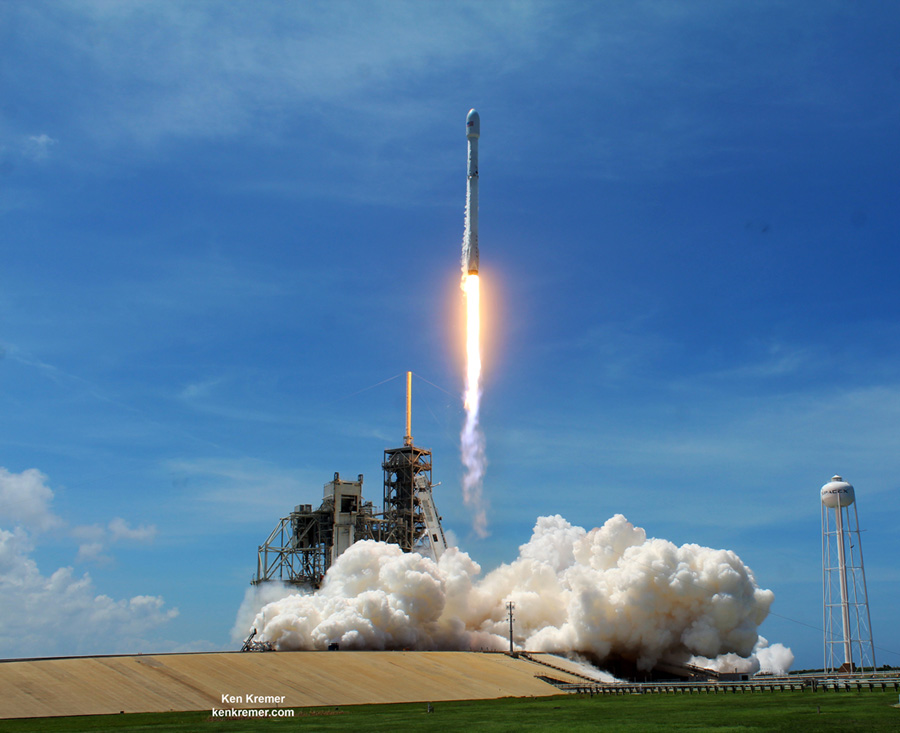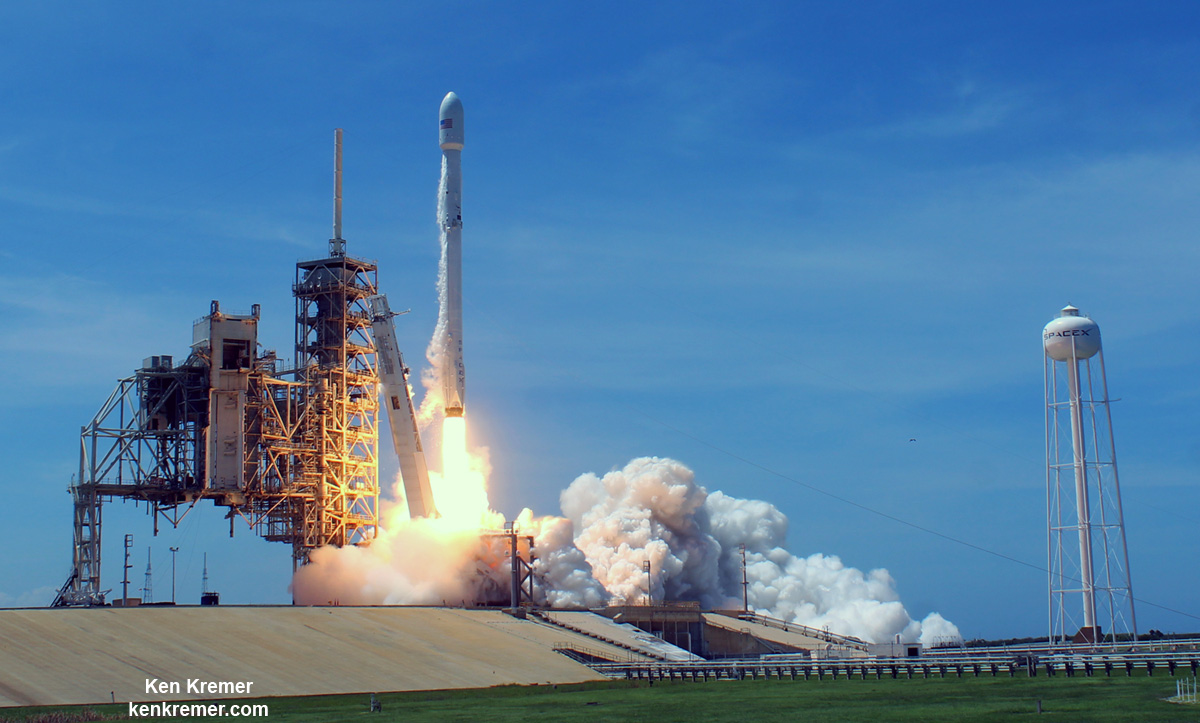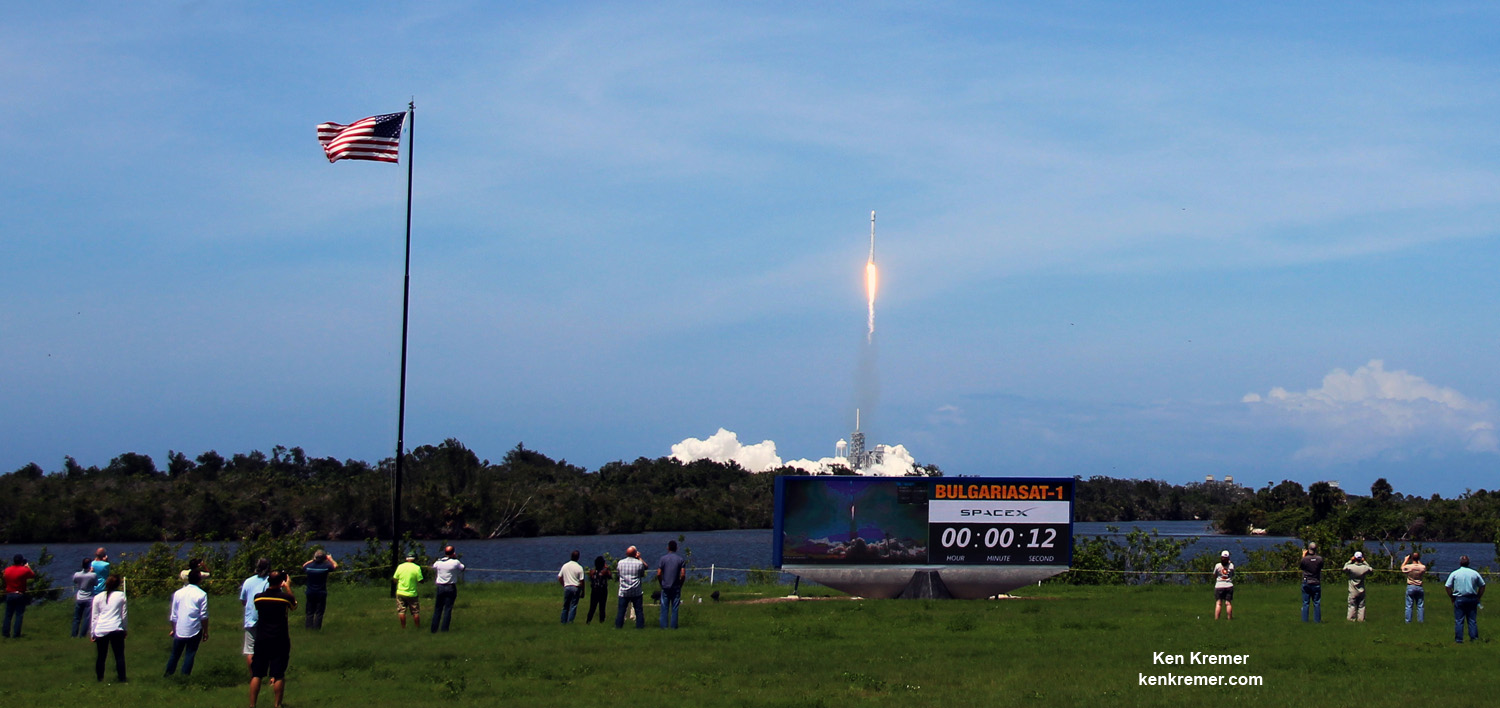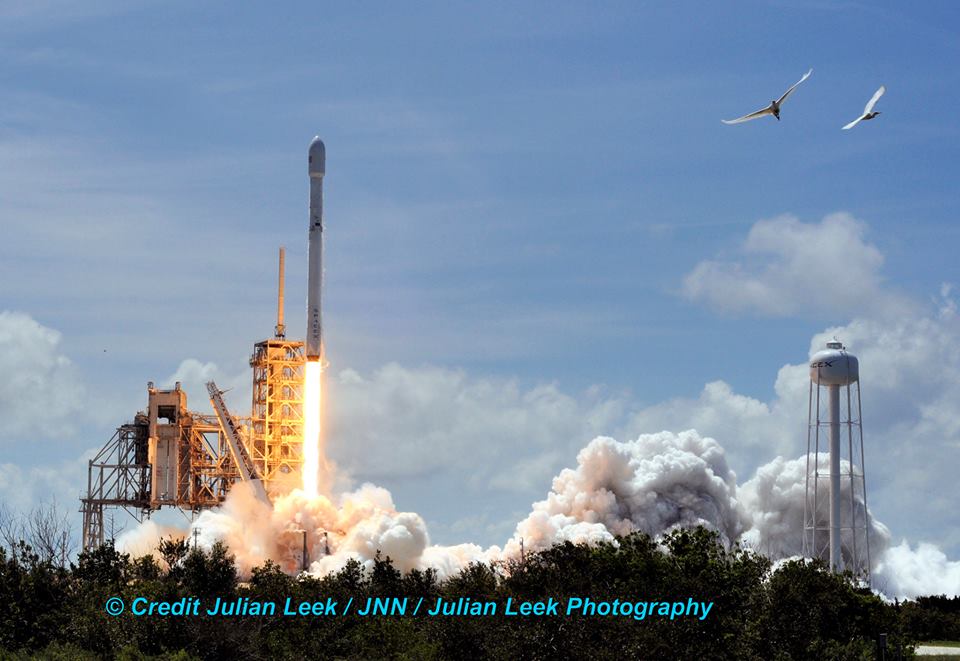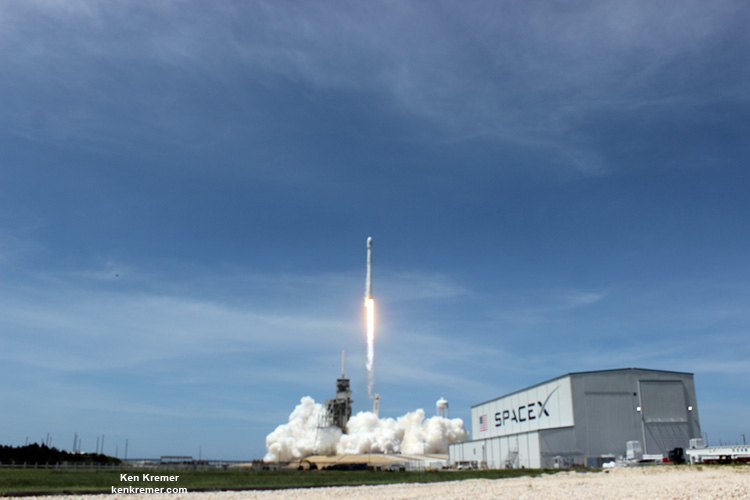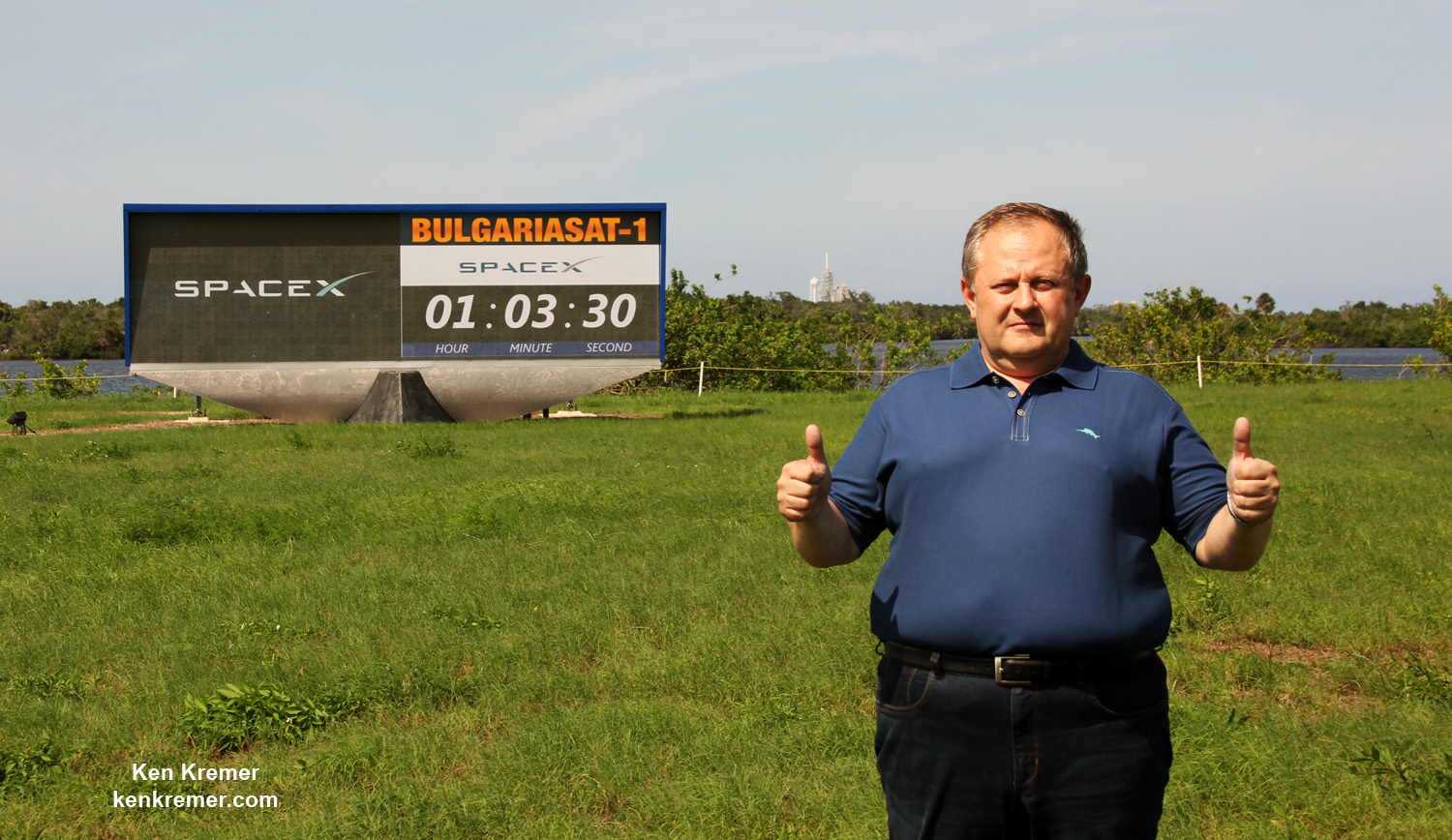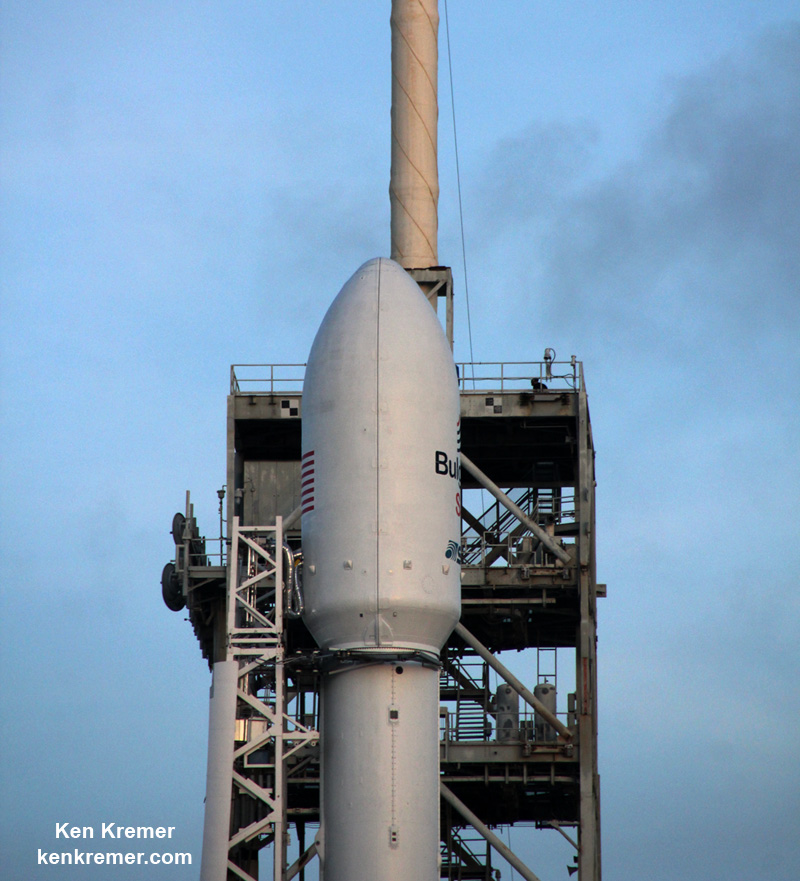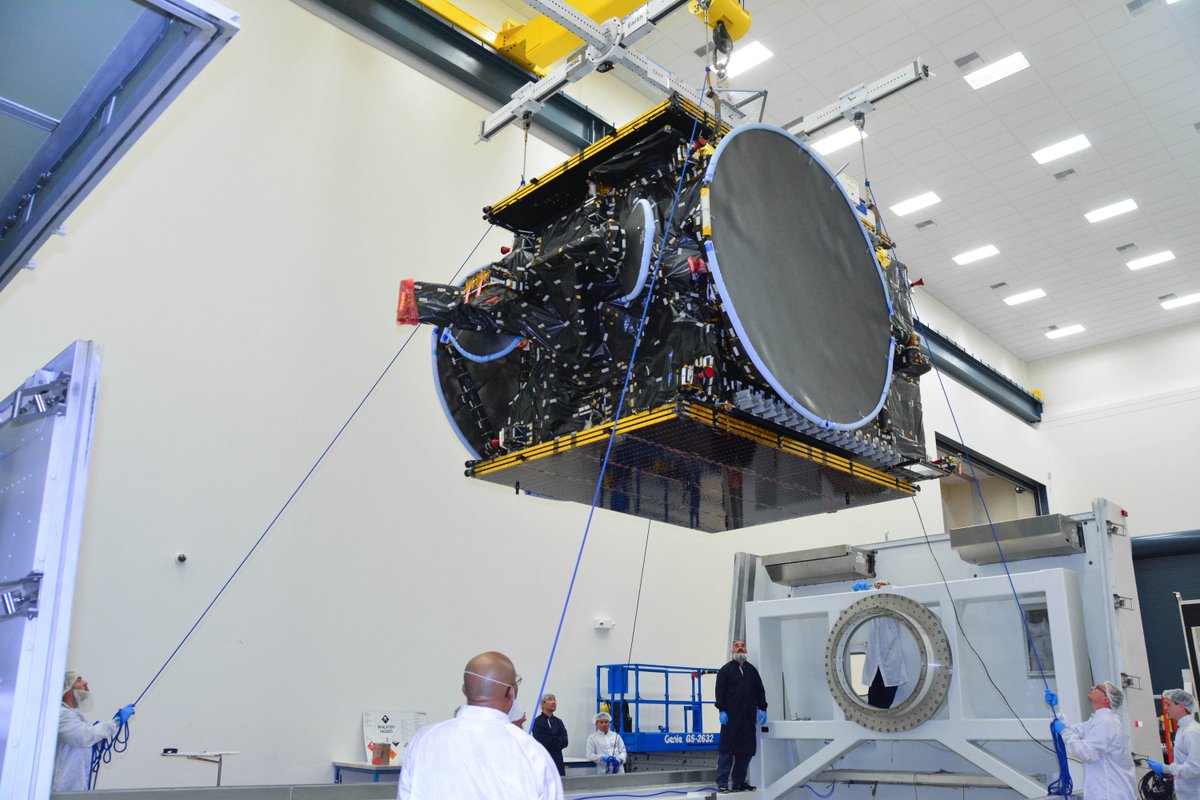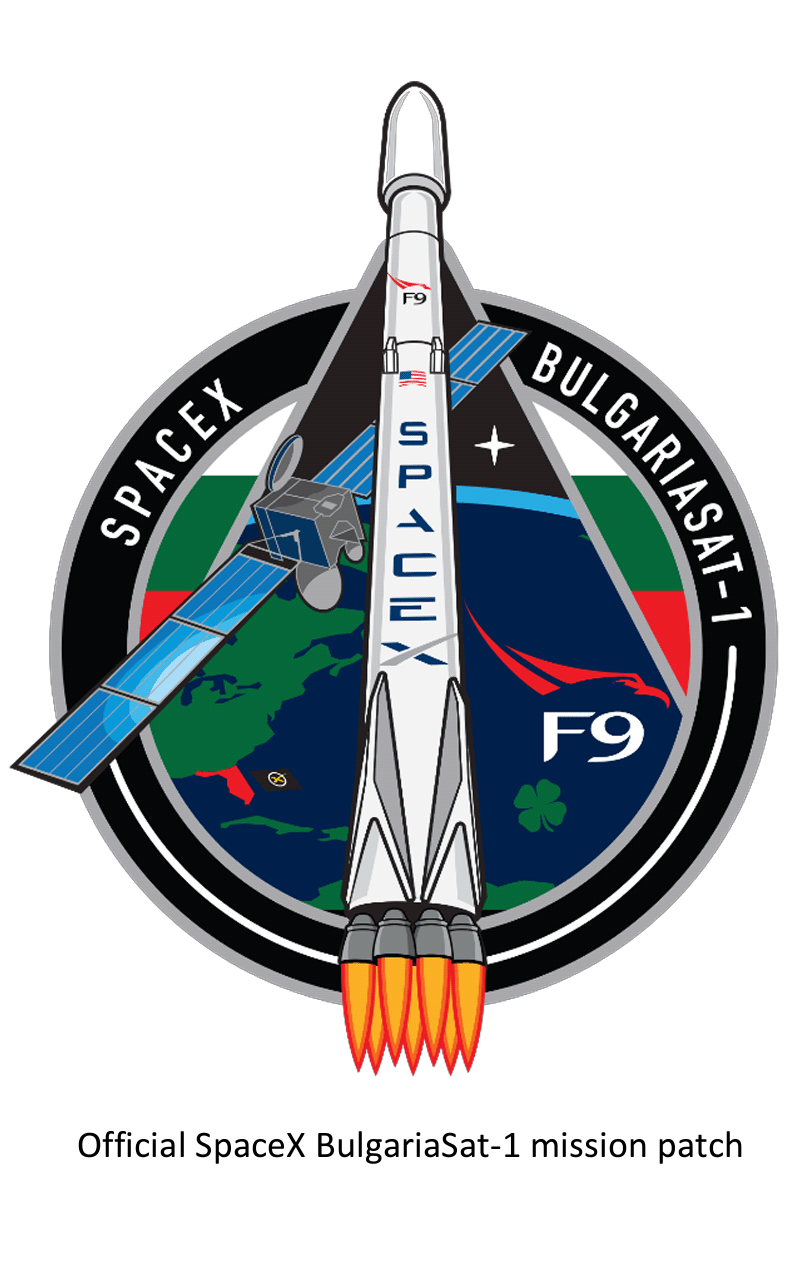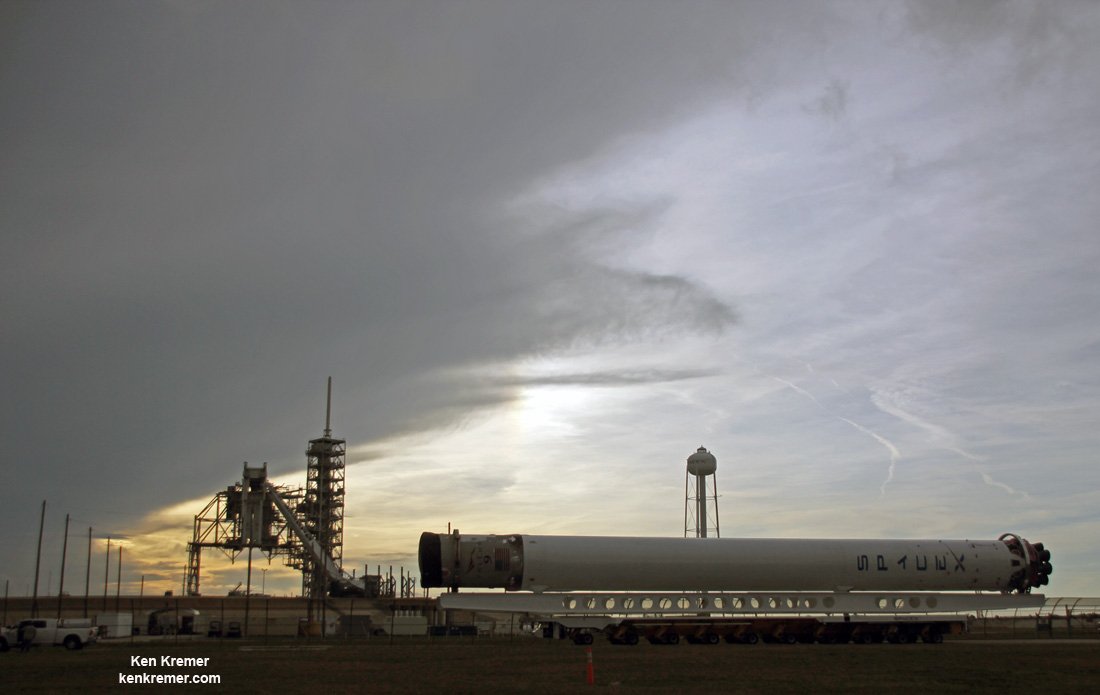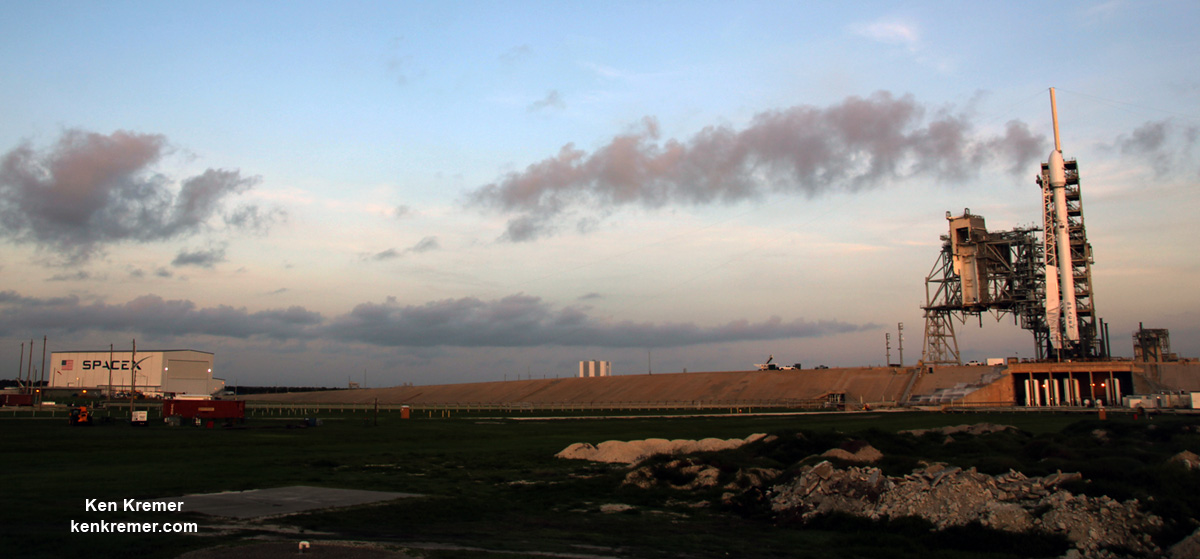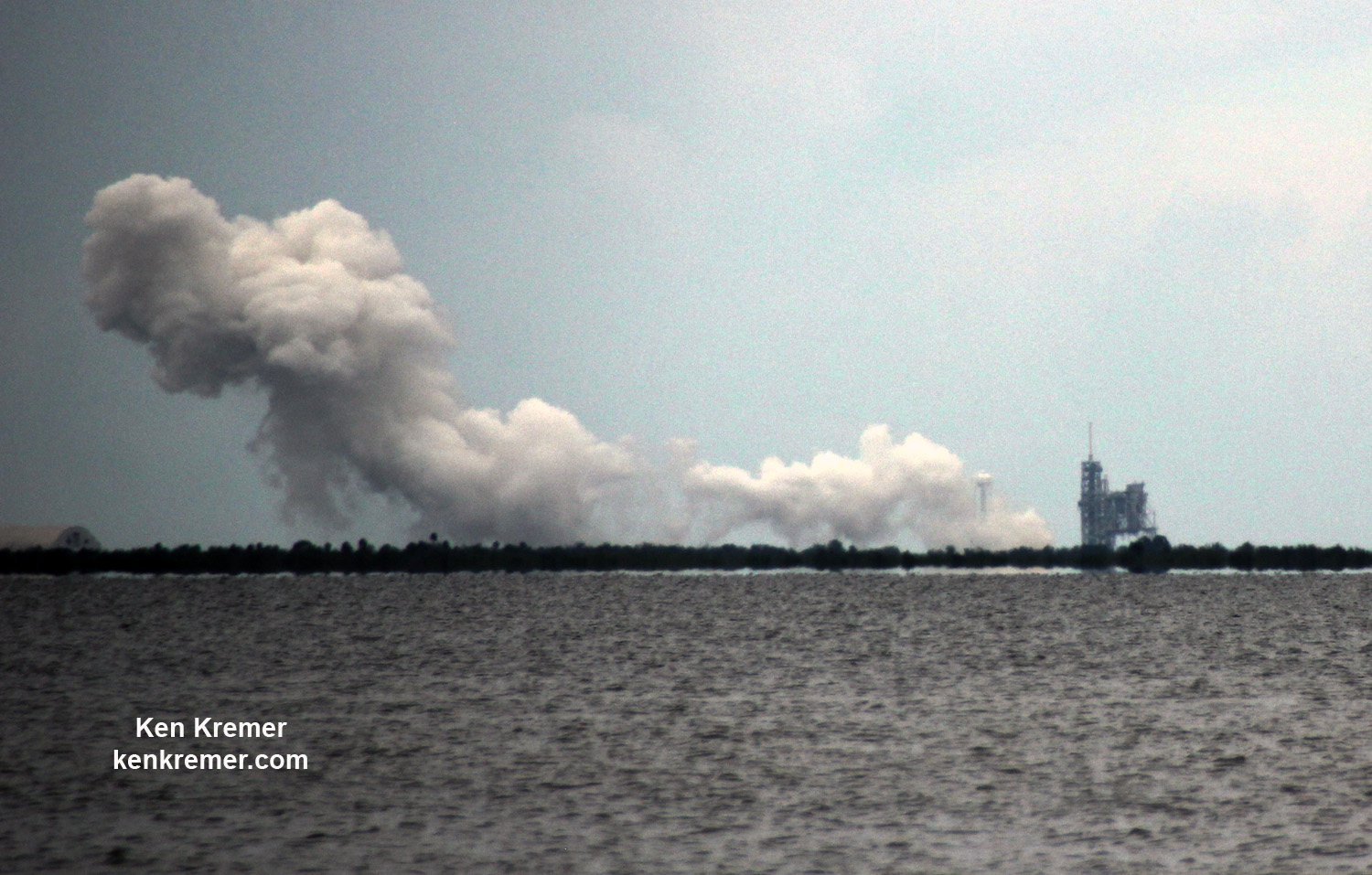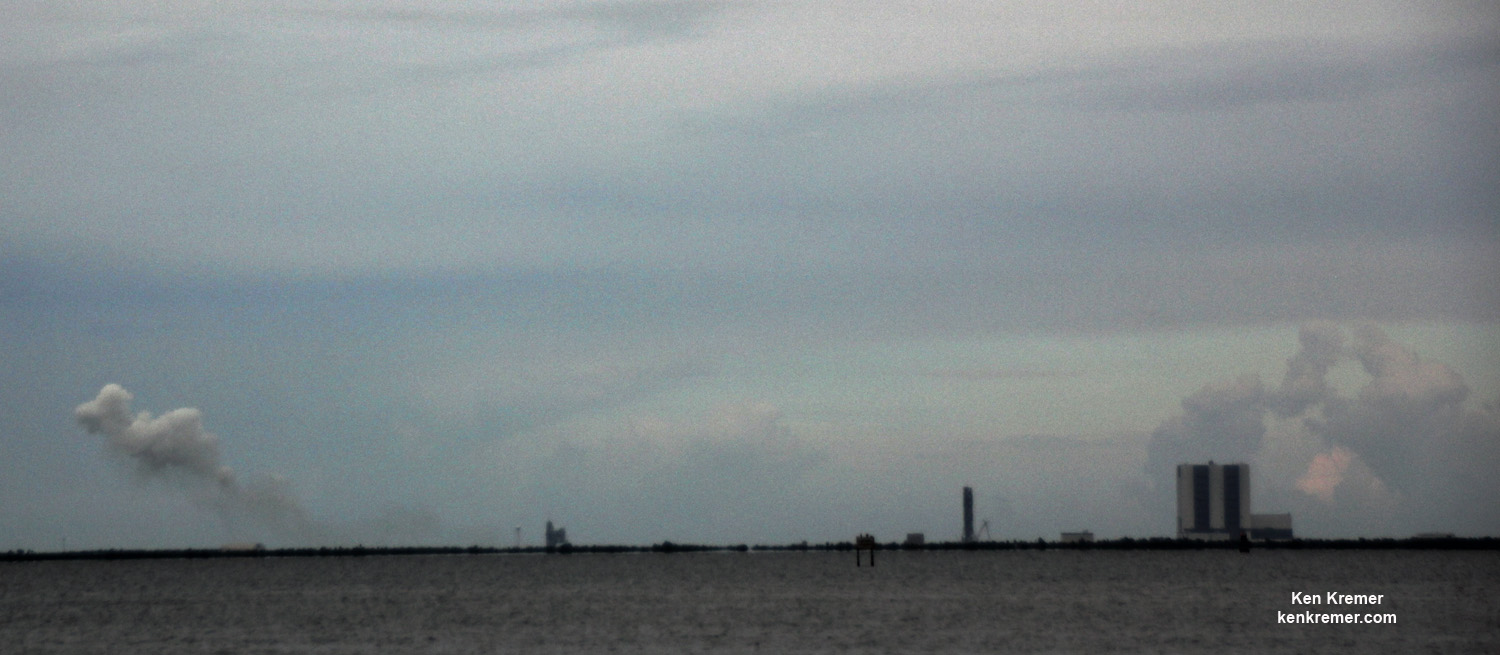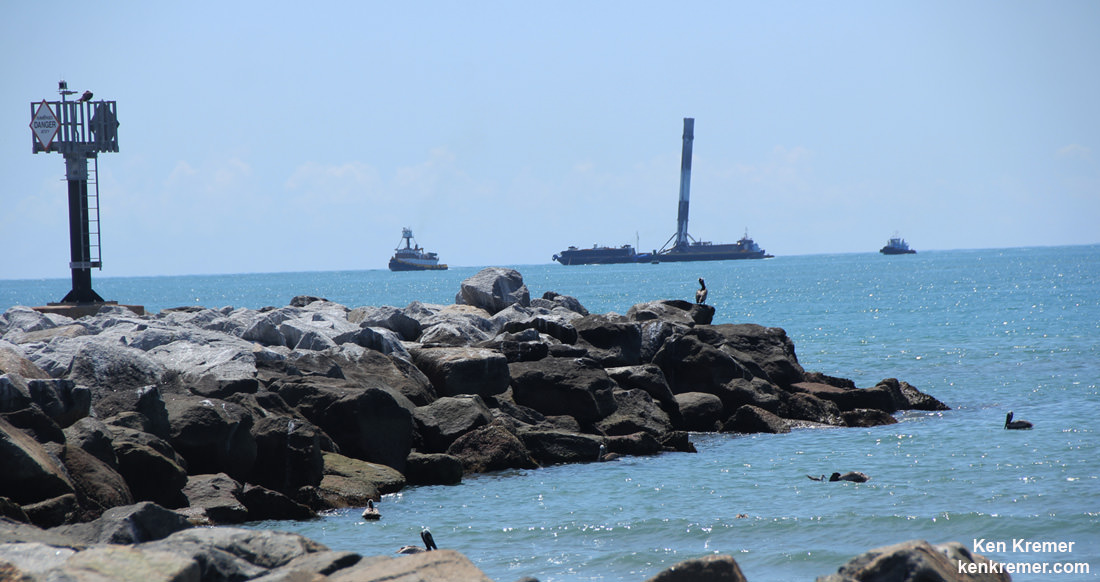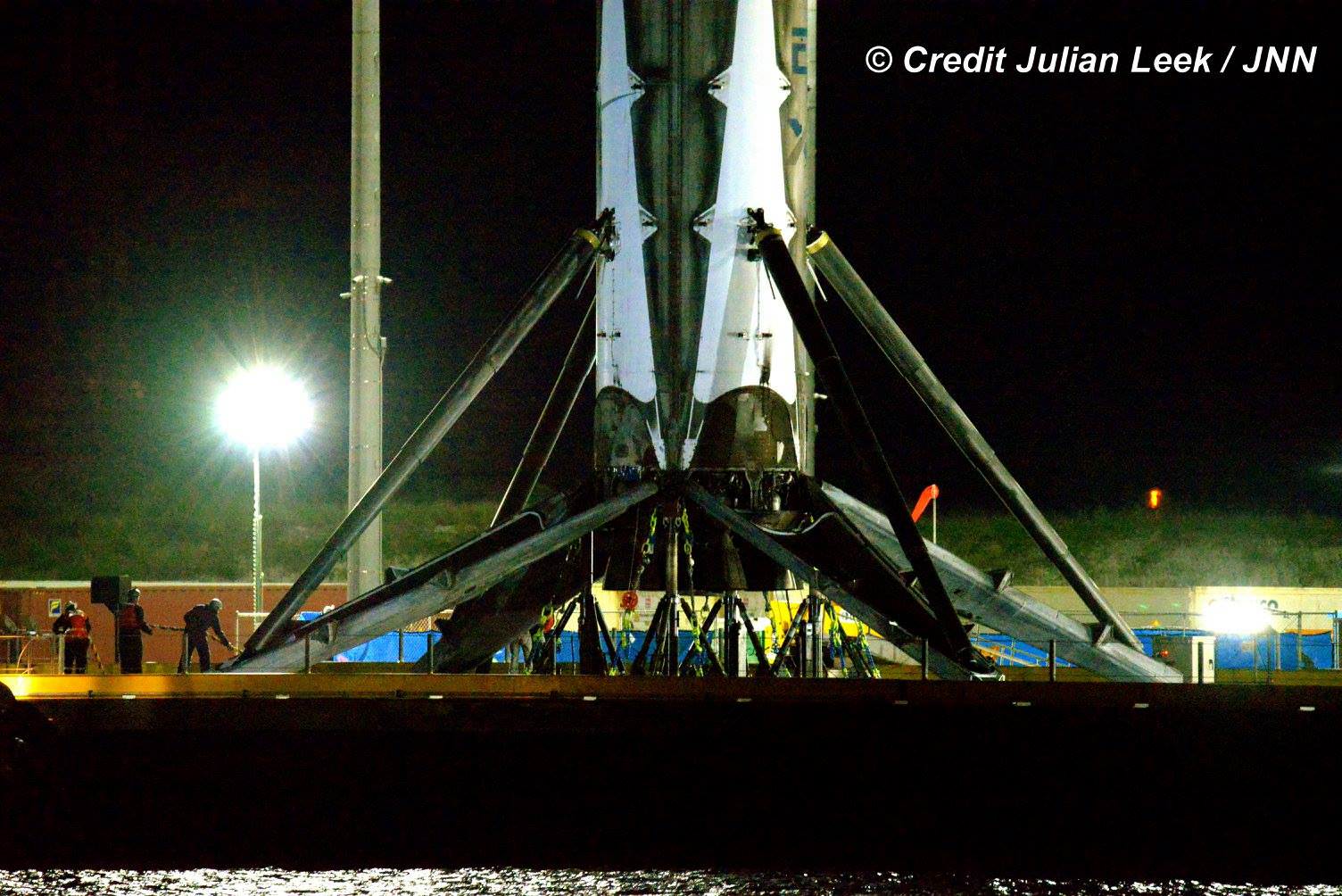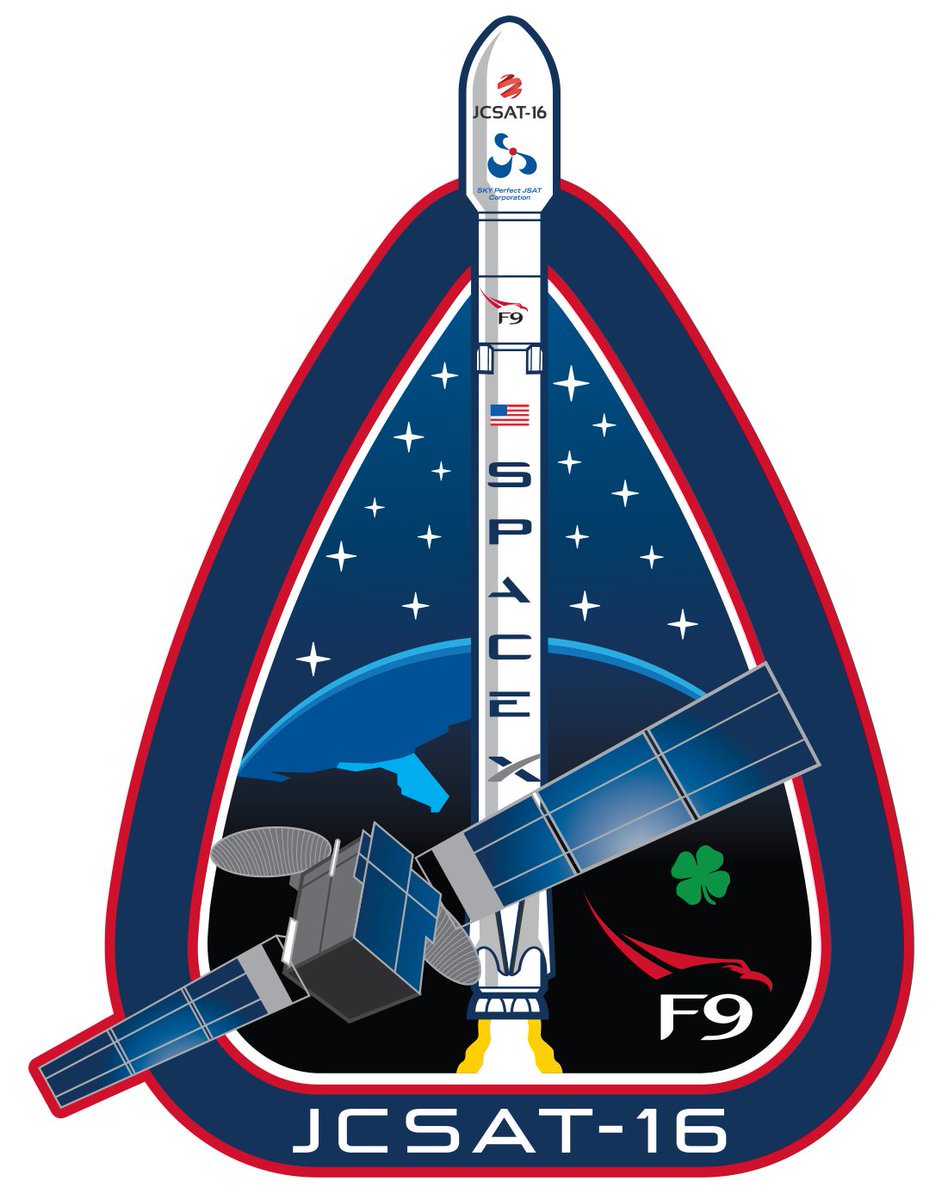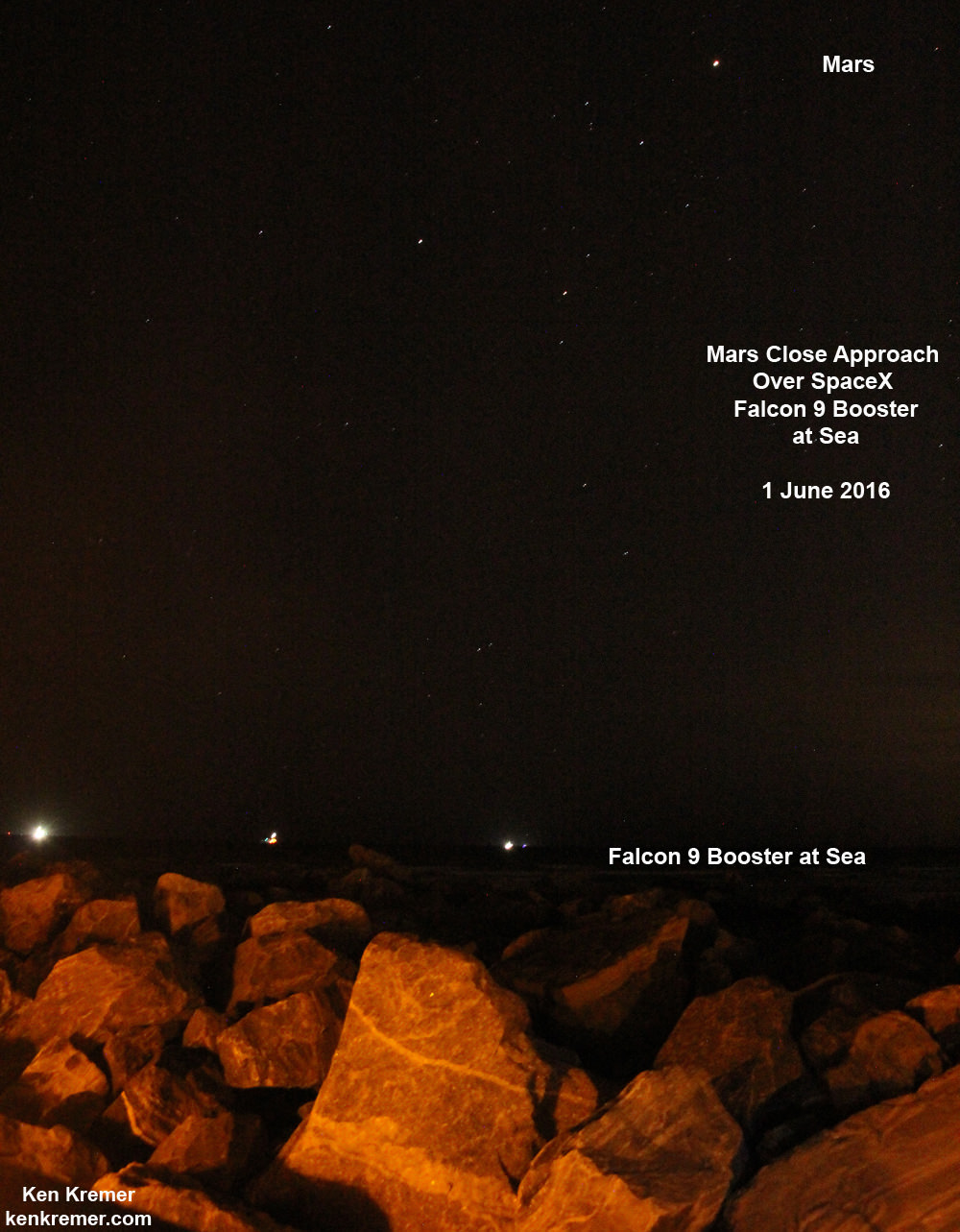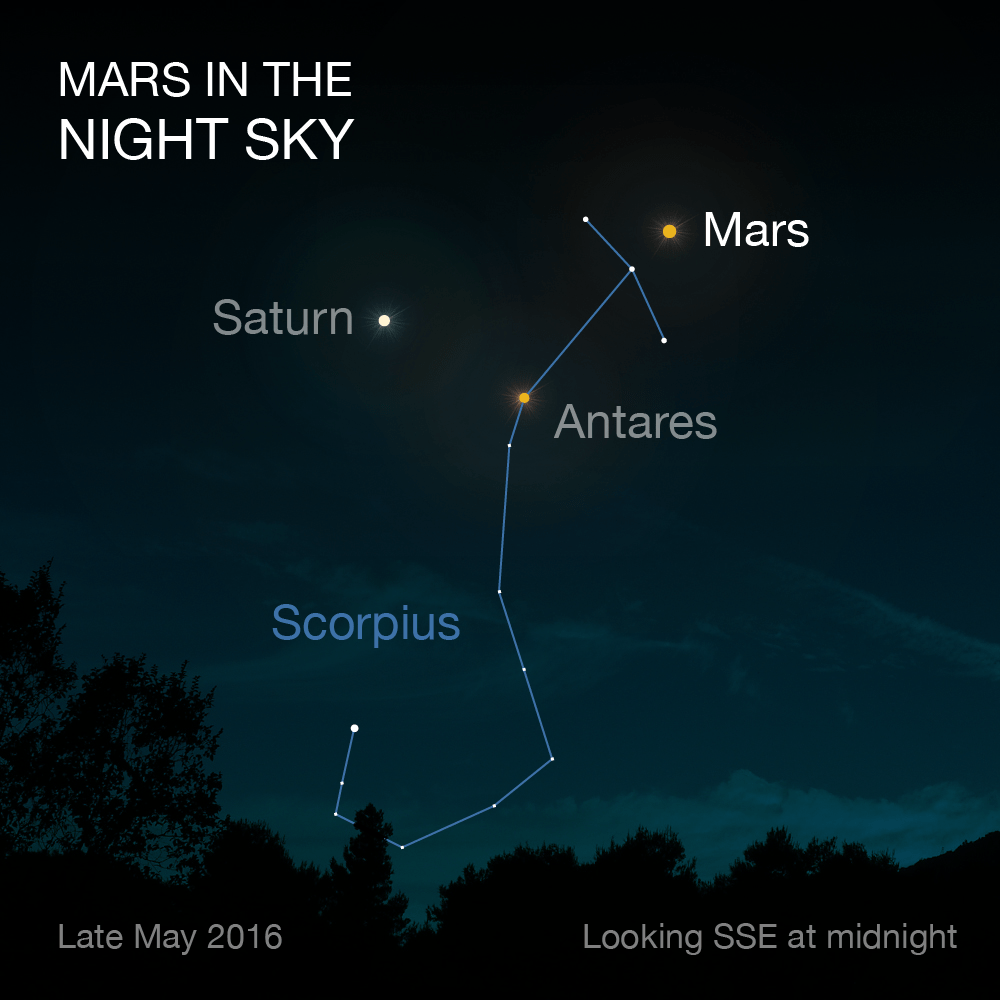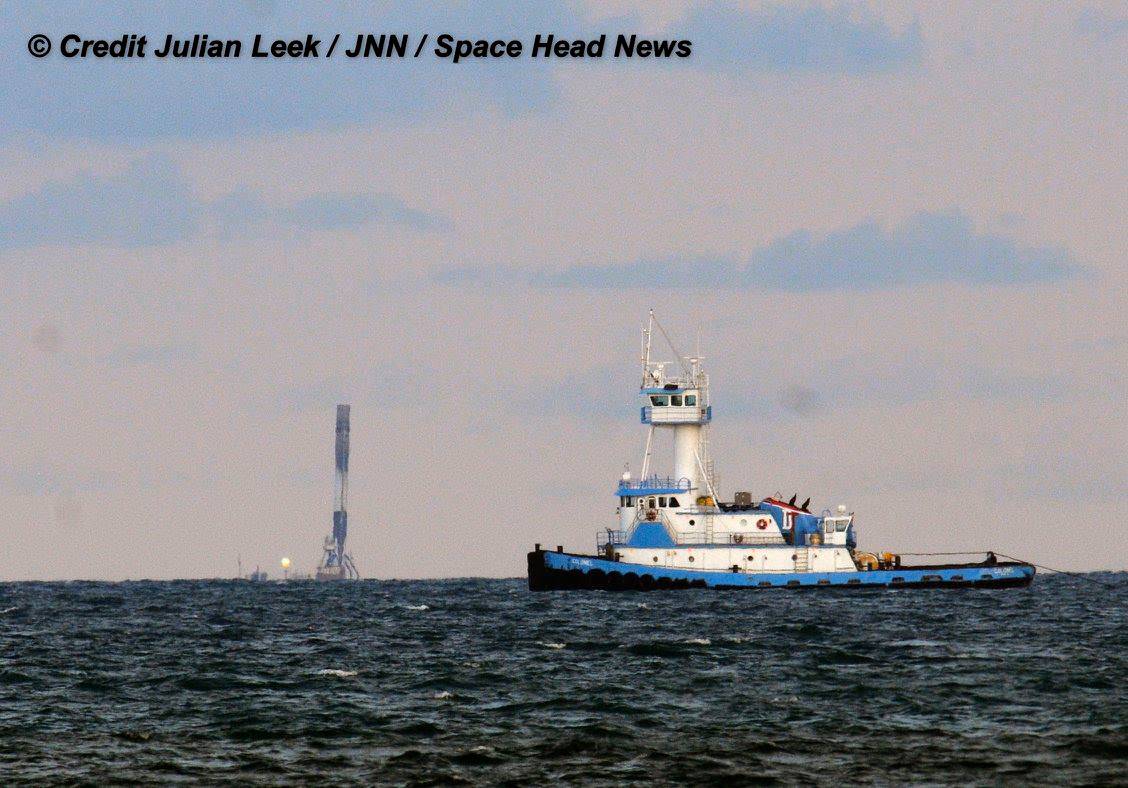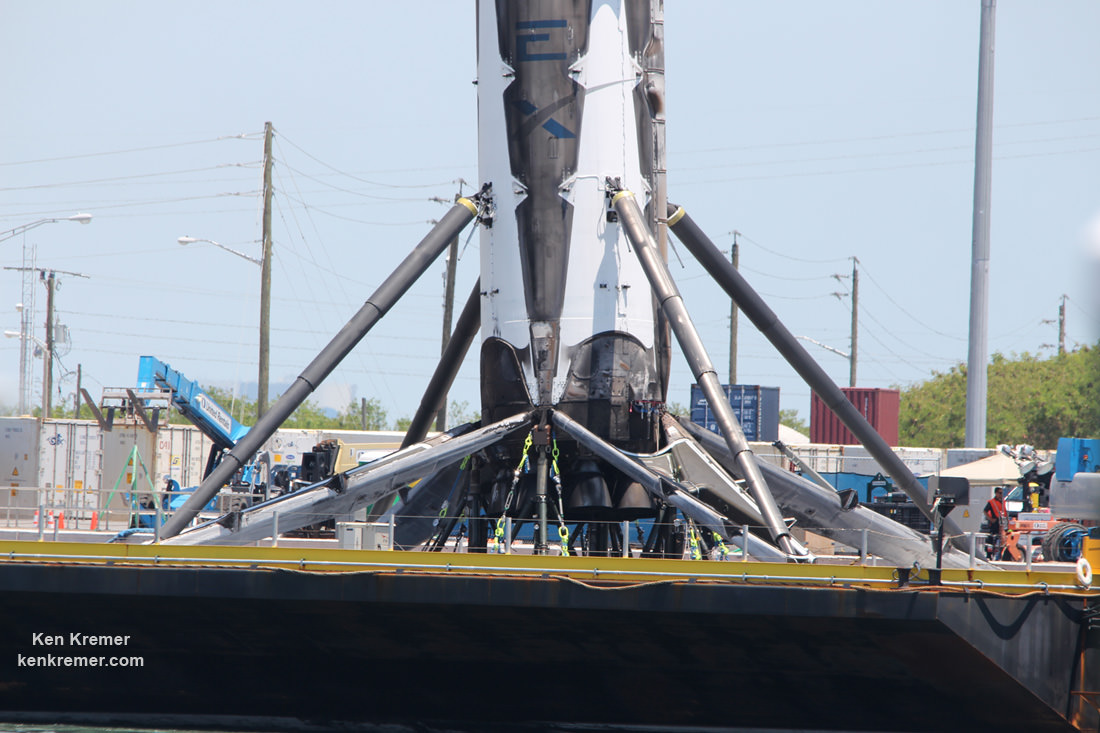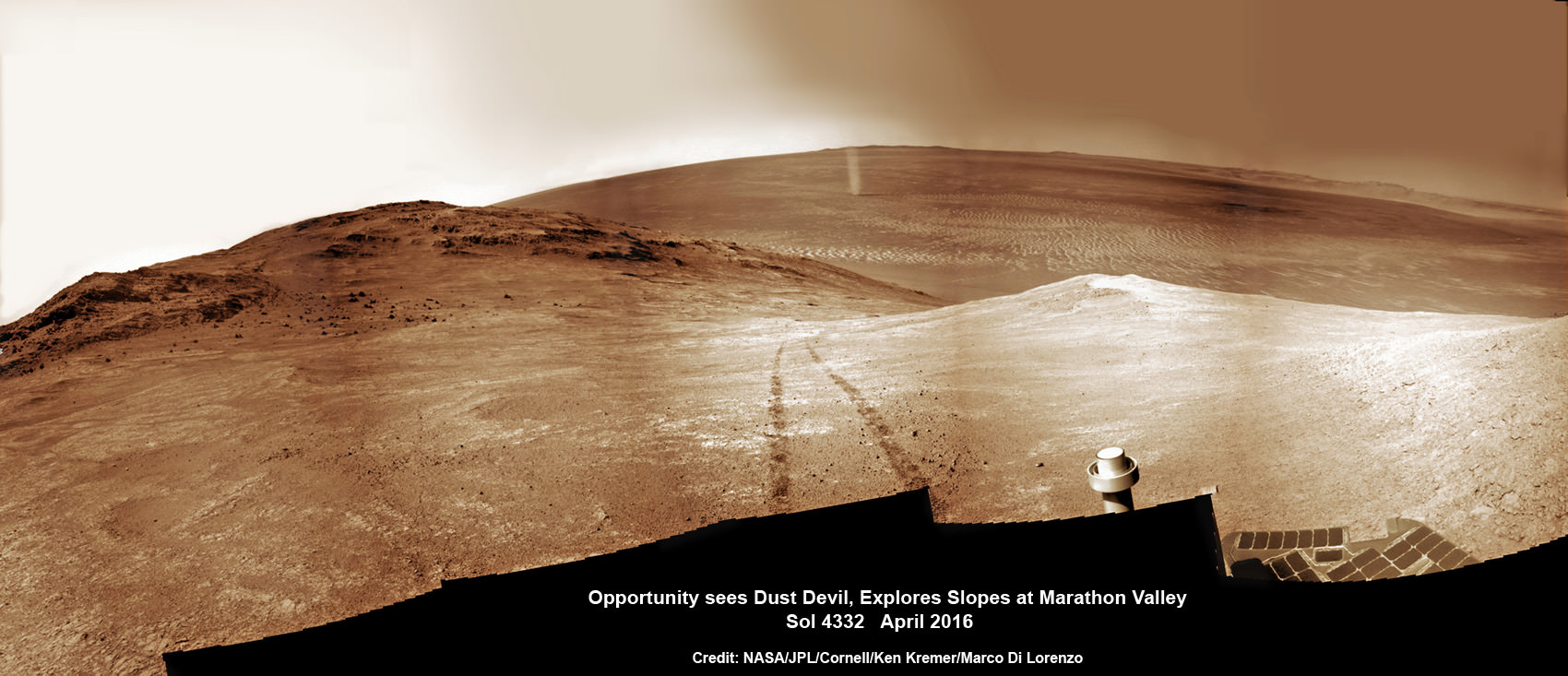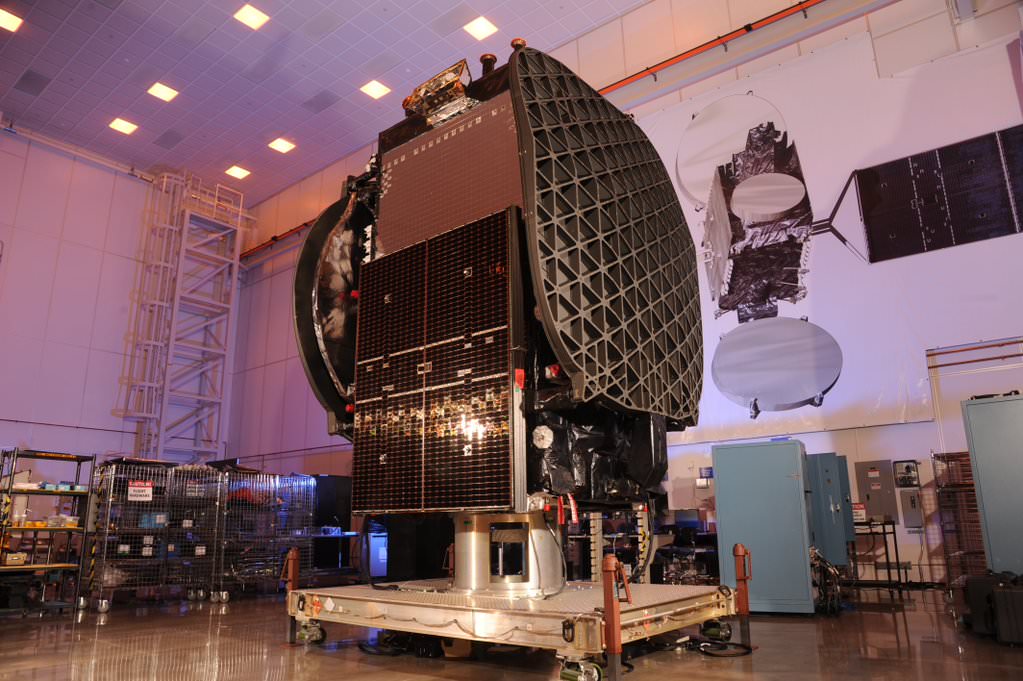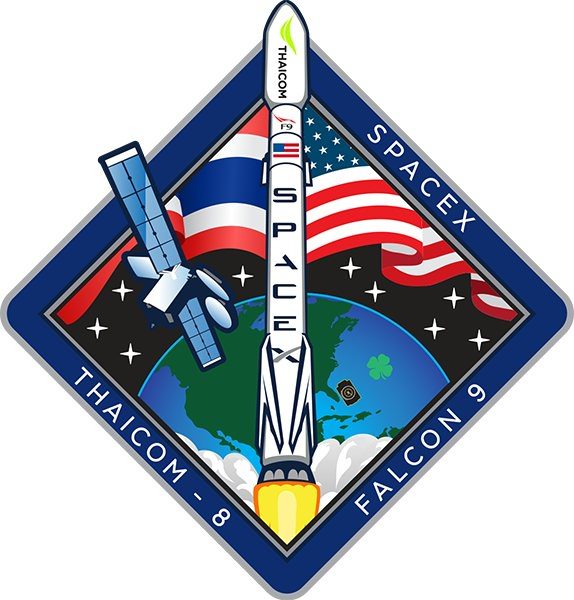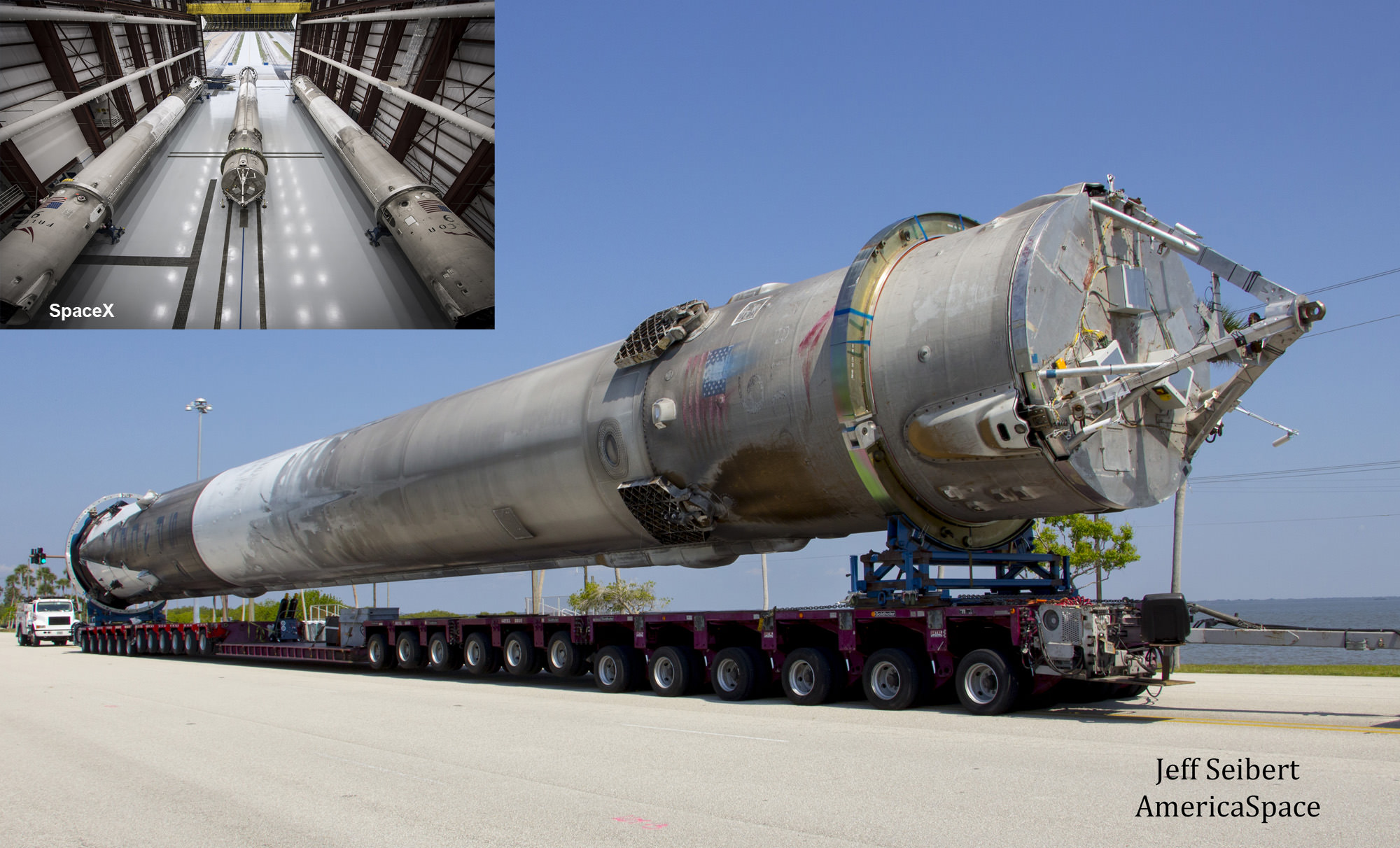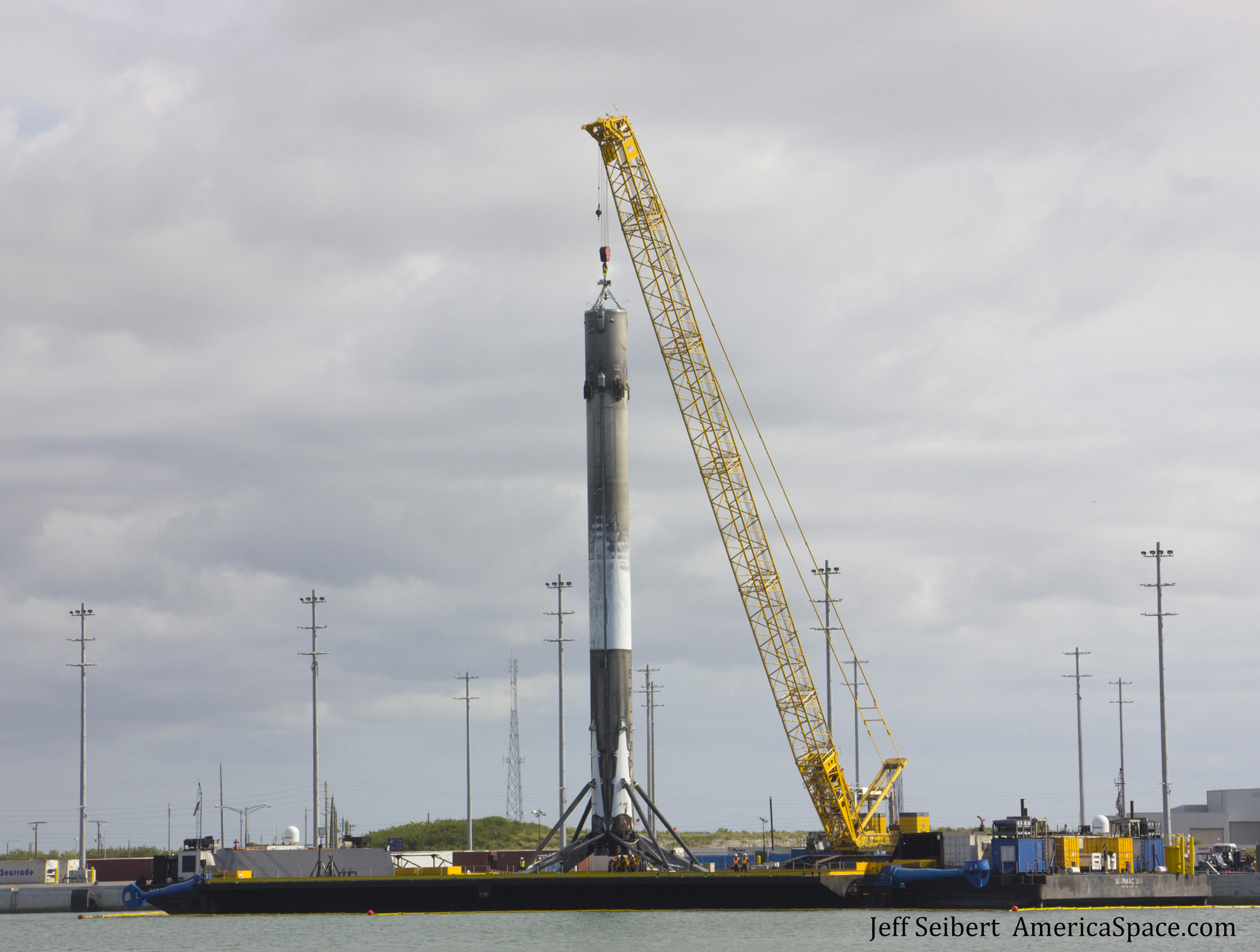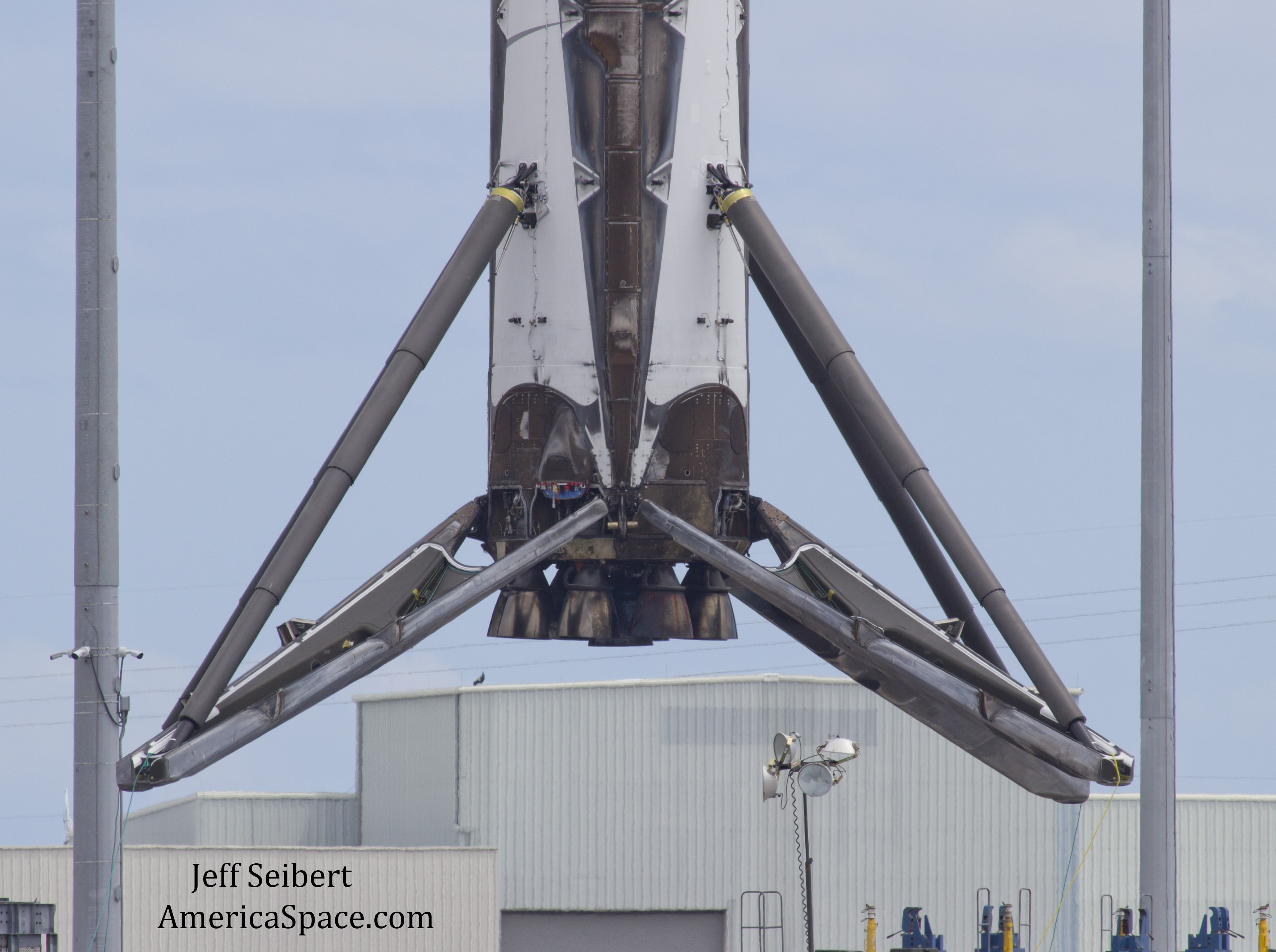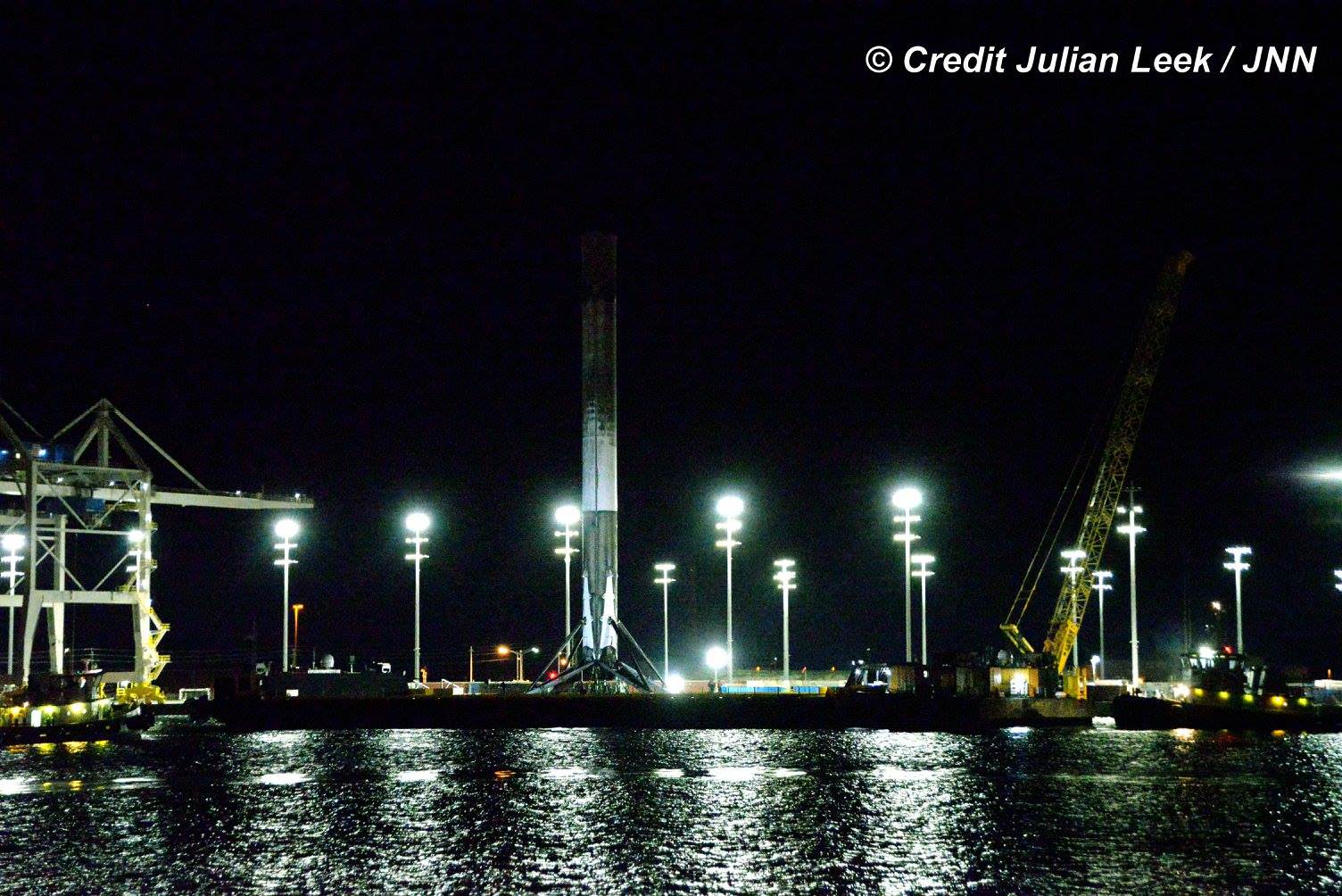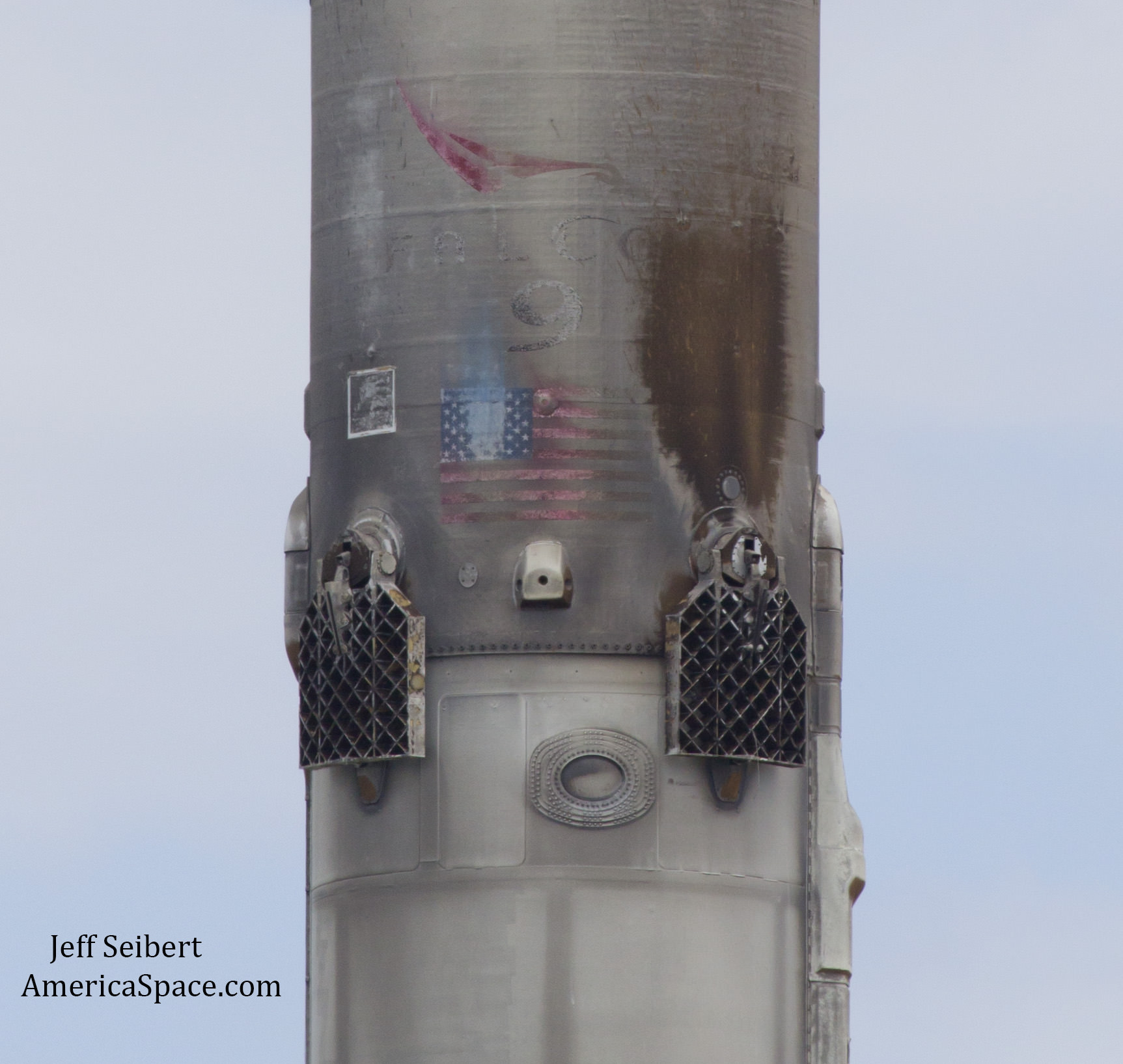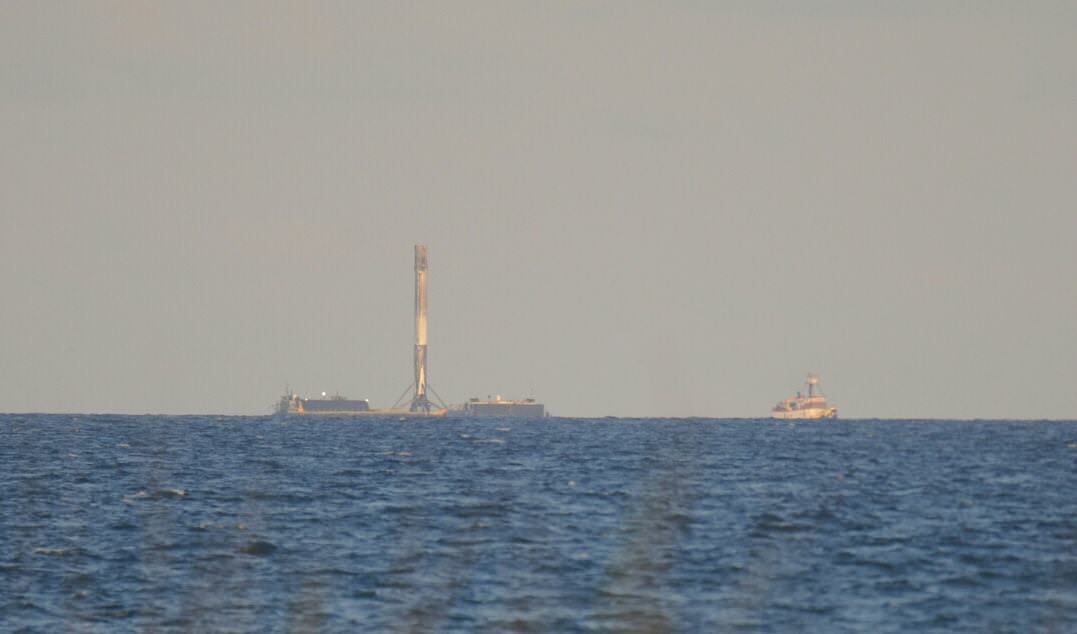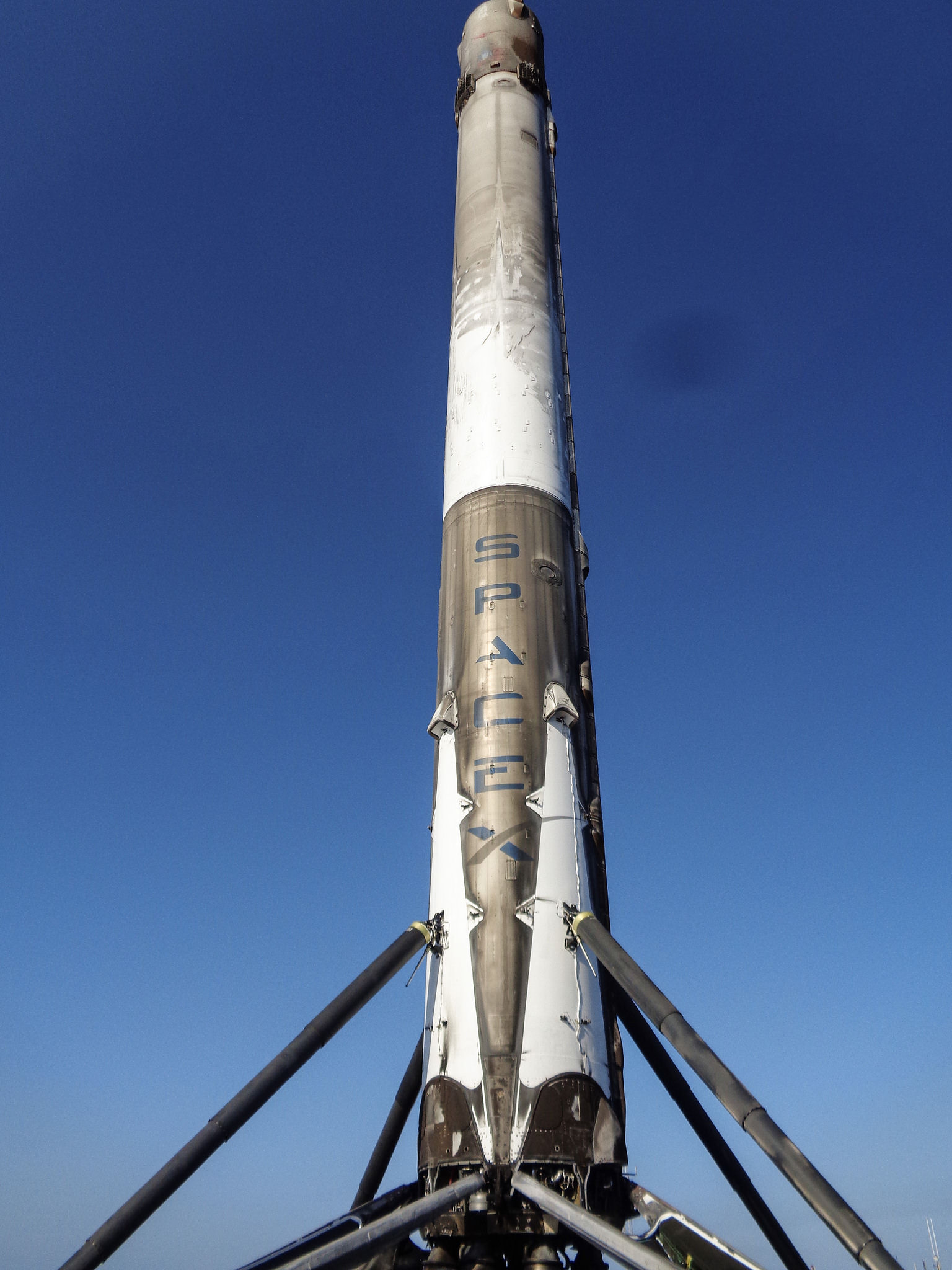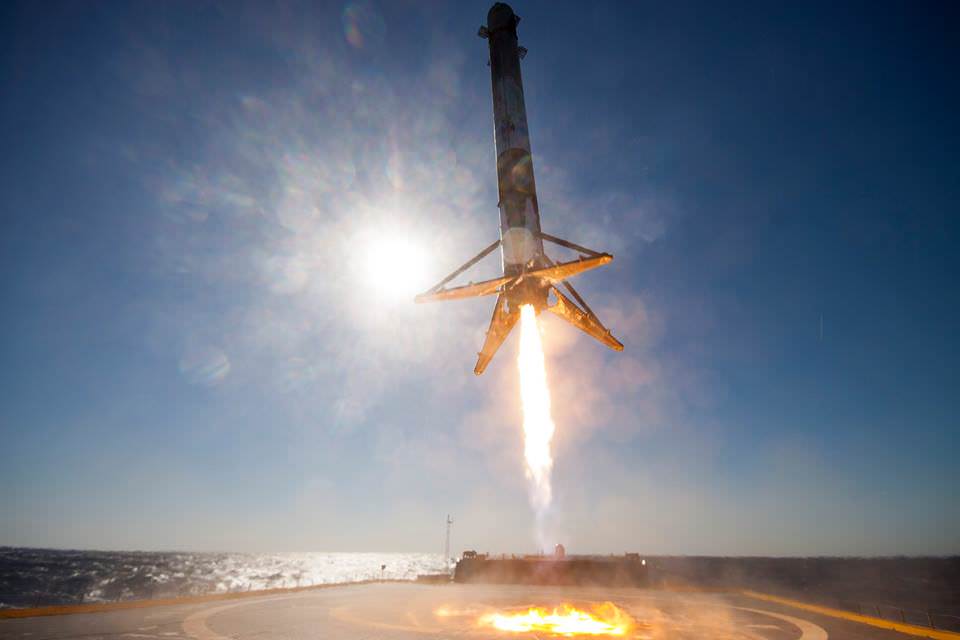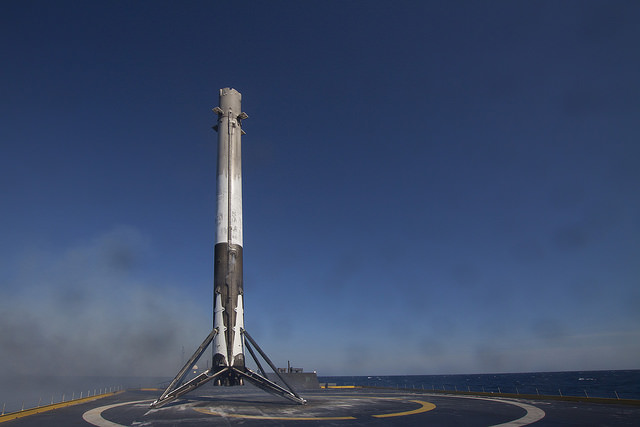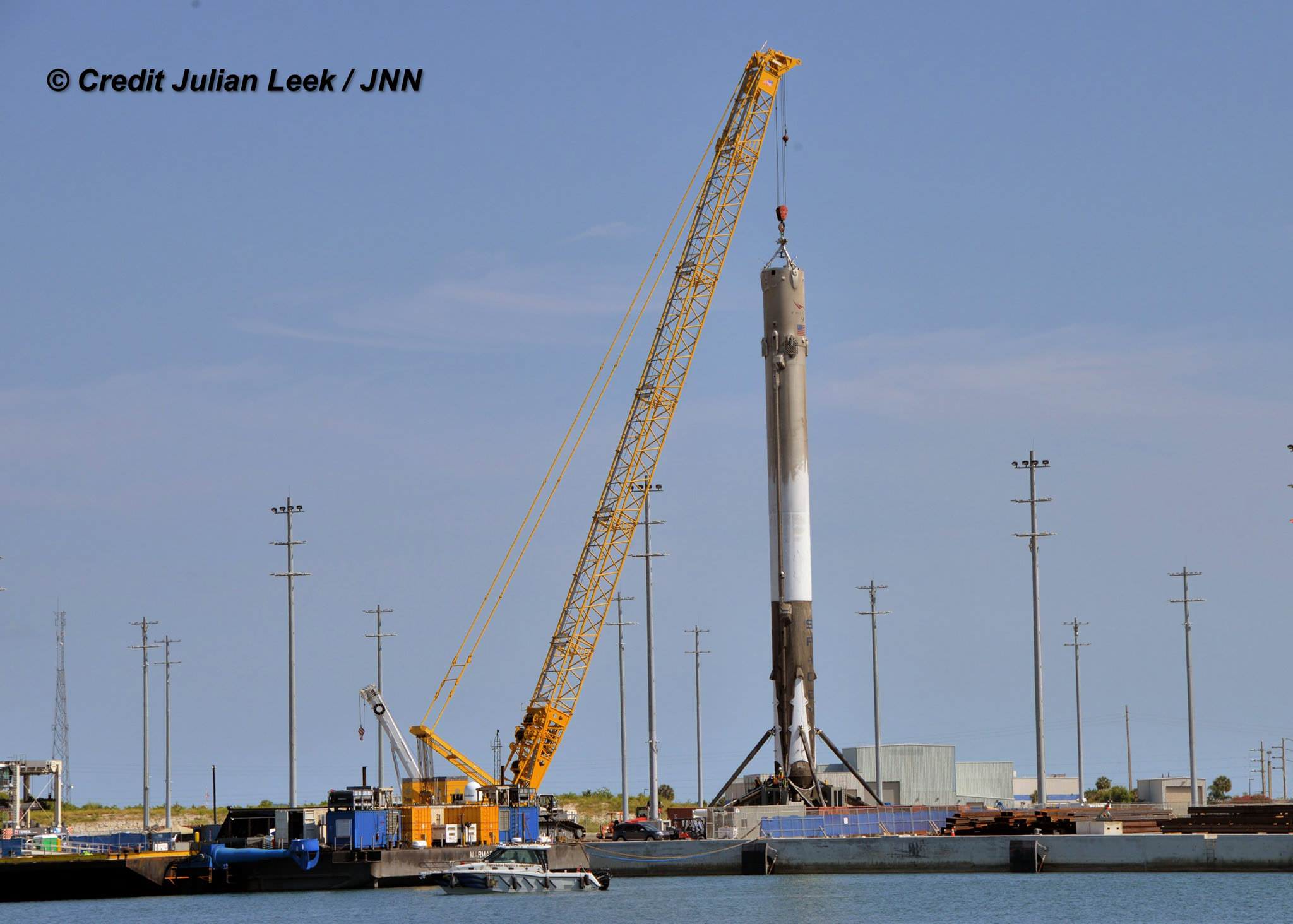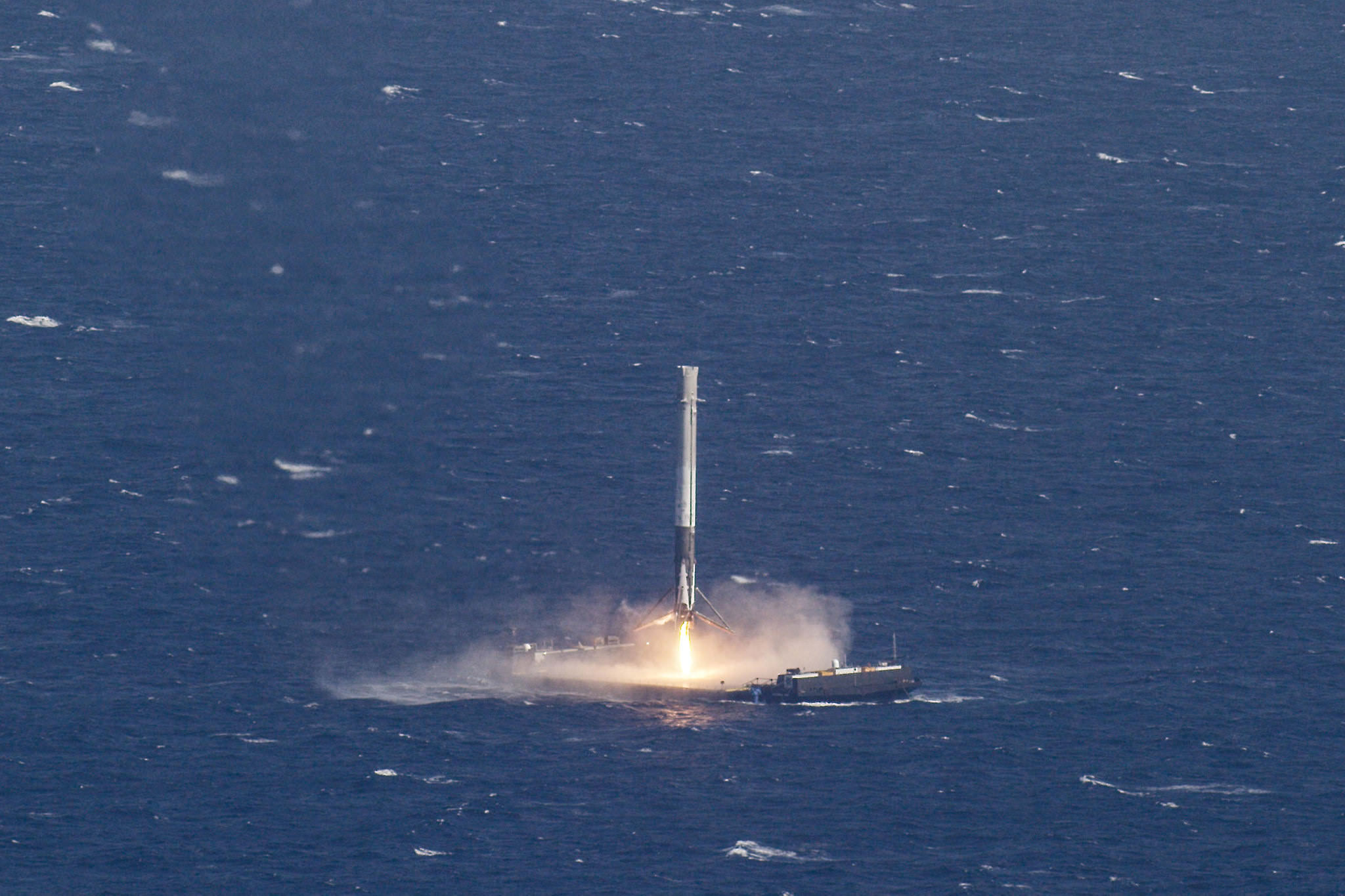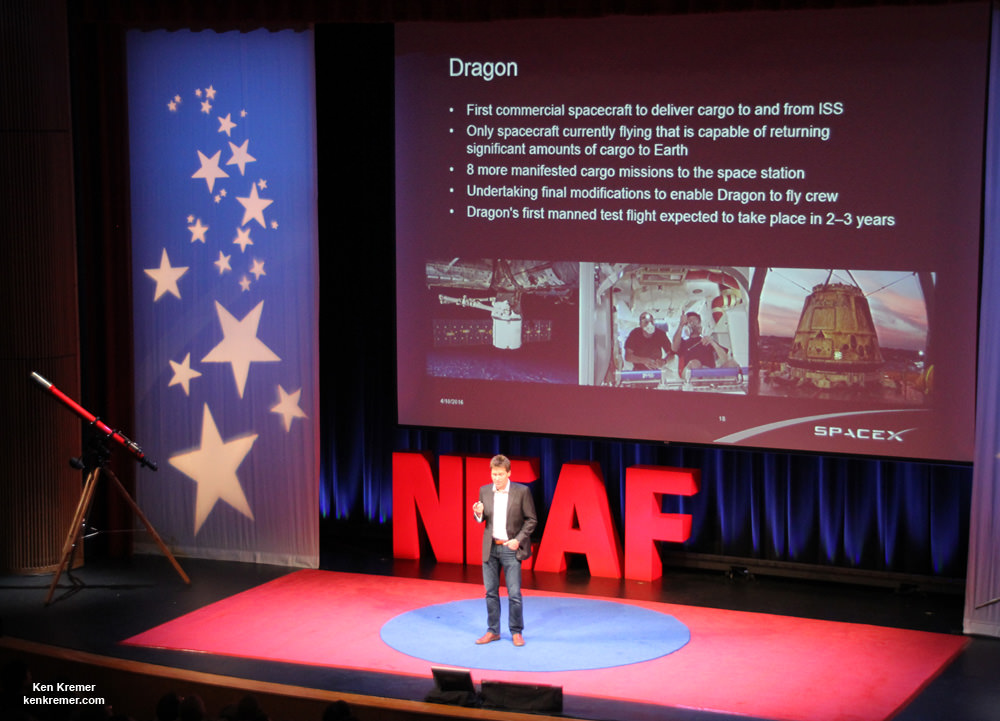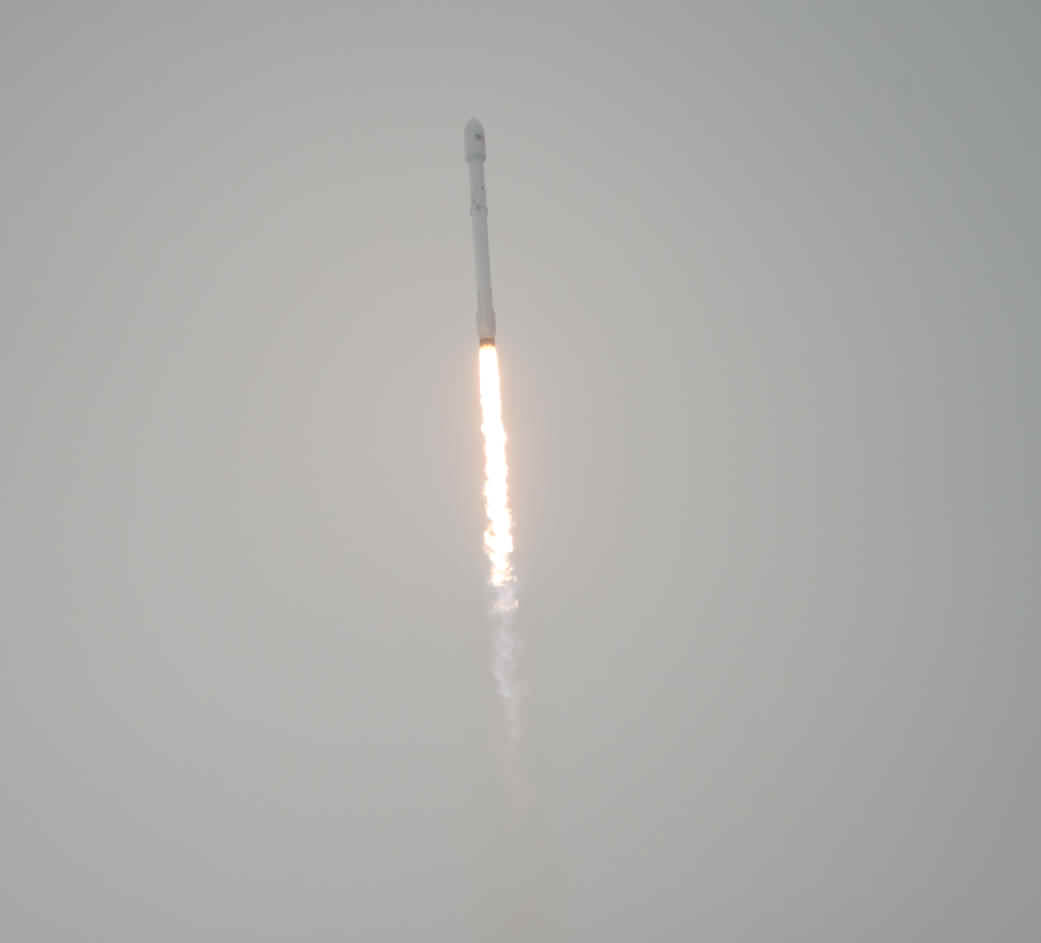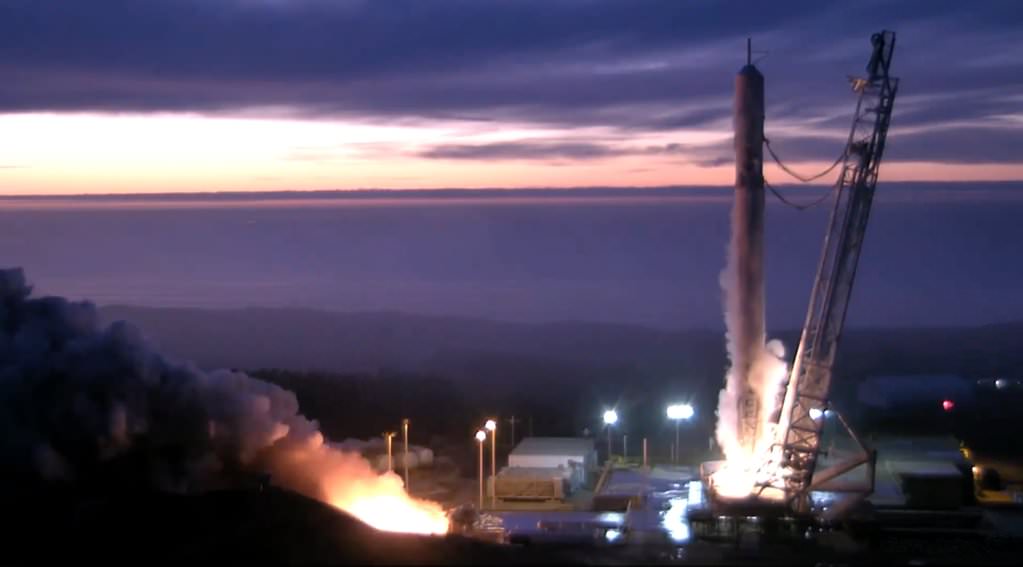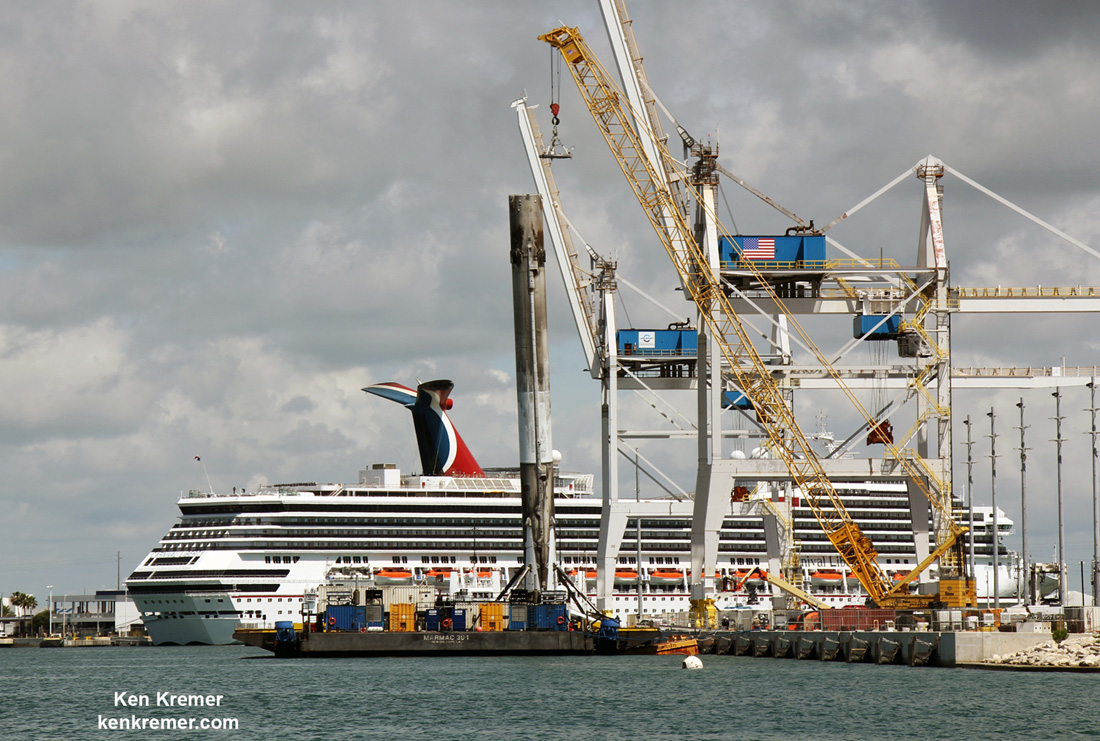
PORT CANAVERAL/KENNEDY SPACE CENTER, FL – The launch cadence at Elon Musk’s SpaceX is truly ramping up with Falcon 9 boosters rapidly coming and going in all directions from ground to space as the firm audaciously sets its sight on a third commercial payload orbital launch on July 2 in the span of just 9 days from its East and West Coast launch bases.
It was a magnificent sight to behold !! Seeing commercial passenger carrying cruise ships and commercial recycled rockets that will one day carry paying passenger to space, floating side by side in the busy channel of narrow Port Canaveral, basking in the suns glow from the sunshine state.
The doubly ‘flight-proven’ SpaceX Falcon 9 booster portends a promising future for spaceflight that Elon Musk hopes and plans will drastically slash the high cost of rocket launches and institute economic savings that would eventually lead to his dream of a ‘City on Mars!’ – sooner rather than later.
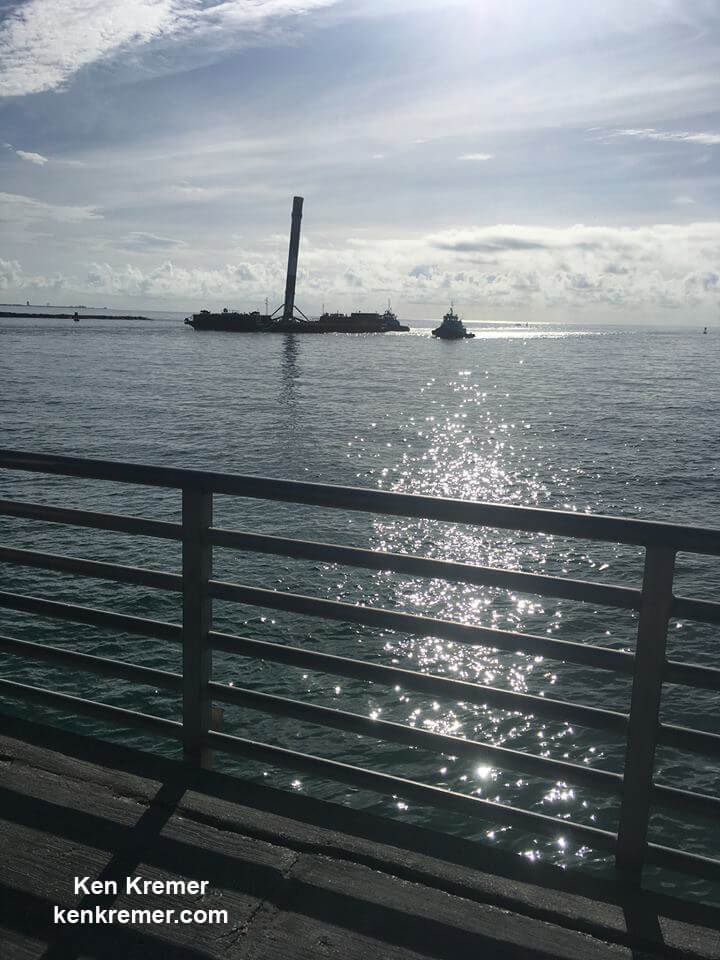
Thursday, June 29, serves as a perfect example of how SpaceX is rocking the space industry worldwide.
First, the reused first stage Falcon 9 booster from last Friday’s (June 23) SpaceX launch of the BulgariaSat-1 HD television broadcast satellite floated magnificently into Port Canaveral early Thursday morning atop the diminutive oceangoing droneship upon which it safely touched down upright on a quartet of landing legs some eight minutes after launch.
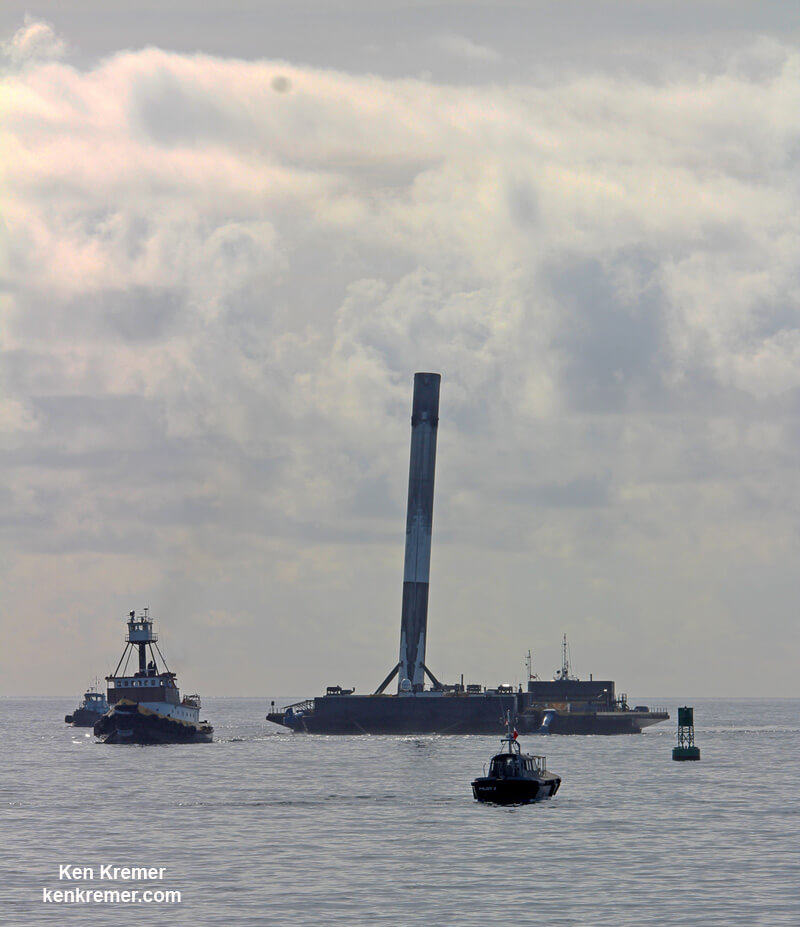
Second, SpaceX engineers then successfully conducted a late in the day static hot fire test of the Falcon 9 first stage engines and core that will power the next launch of the Intelsat 35e commercial comsat to orbit this Sunday, July 2.
So the day was just chock full of nonstop SpaceX rocketry action seeing a full day of rocket activities from dawn to dusk.
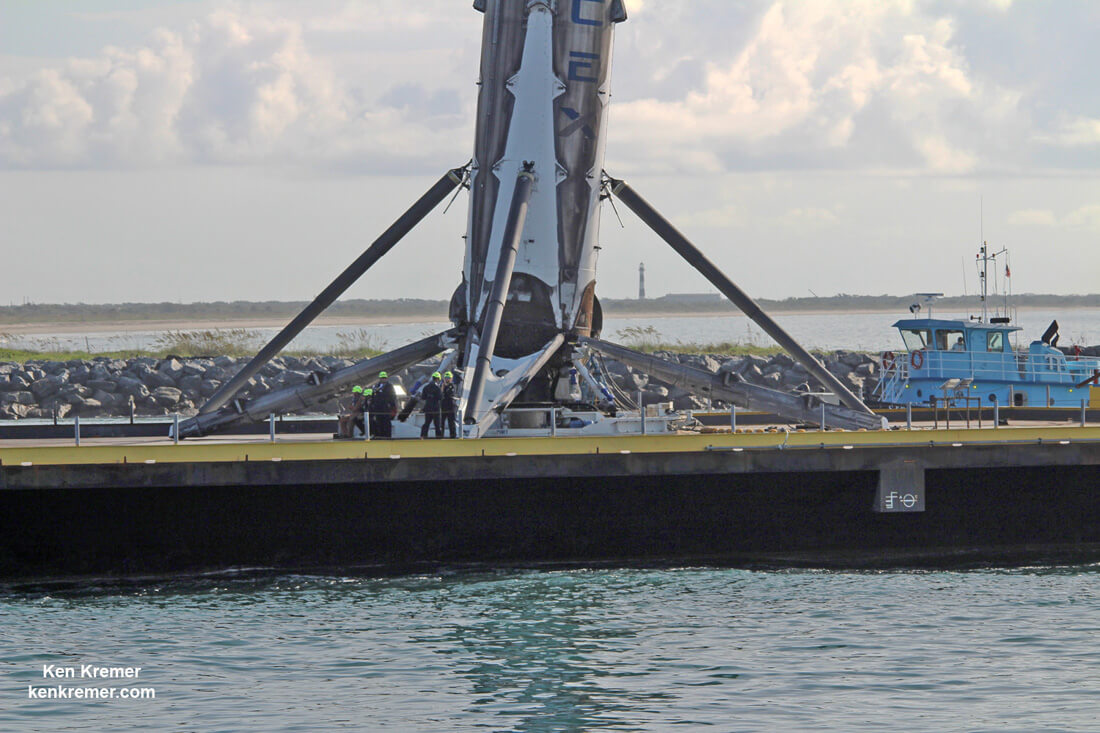
Thursday’s nonstop Space Coast action spanning from the north at the Kennedy Space Center and further south to Cape Canaveral Air Force Station and Port Canaveral was the culmination of space launch flow events that actually began days, weeks and months earlier.
The 156 foot- tall Falcon 9 booster had successfully landed on the tiny rectangular shaped “Of Course I Still Love You” or OCISLY droneship less than nine minutes after liftoff on Friday, June 23 on the BulgariaSat-1 flight.
That mission began with the picture perfect liftoff of the BulgariaSat-1 communications satellite for East European commercial broadband provider BulgariaSat at 3:10 p.m. EDT, or 19:10 UTC, June 23, with ignition of all nine of the ‘flight-proven’ Falcon 9 first stage engines on SpaceX’s seaside Launch Complex 39A at NASA’s Kennedy Space Center in Florida.
BulgariaSat is an affiliate of Bulsatcom, Bulgaria’s largest digital television provider.
The 15 story tall first stage touched down with a slight tilt of roughly eight degrees as a direct result of the extremely demanding landing regime.
Then after spending several post landing and launch days at sea due to stormy weather along the Florida Space Coast and to accommodate local shipping traffic and SpaceX planning needs, the booster at last neared shore from the south off the coast of Melbourne, FL.
Accompanied by a small armada of support vessels it was slowly towed to port by the Elsbeth III.
The SpaceX flotilla arrived at last at the mouth of Port Canaveral and Jetty Park Pier jutting into the Atlantic Ocean at about 830 a.m. EDT – offering a spectacular view at to a flock of space enthusiasts and photographers including this author.
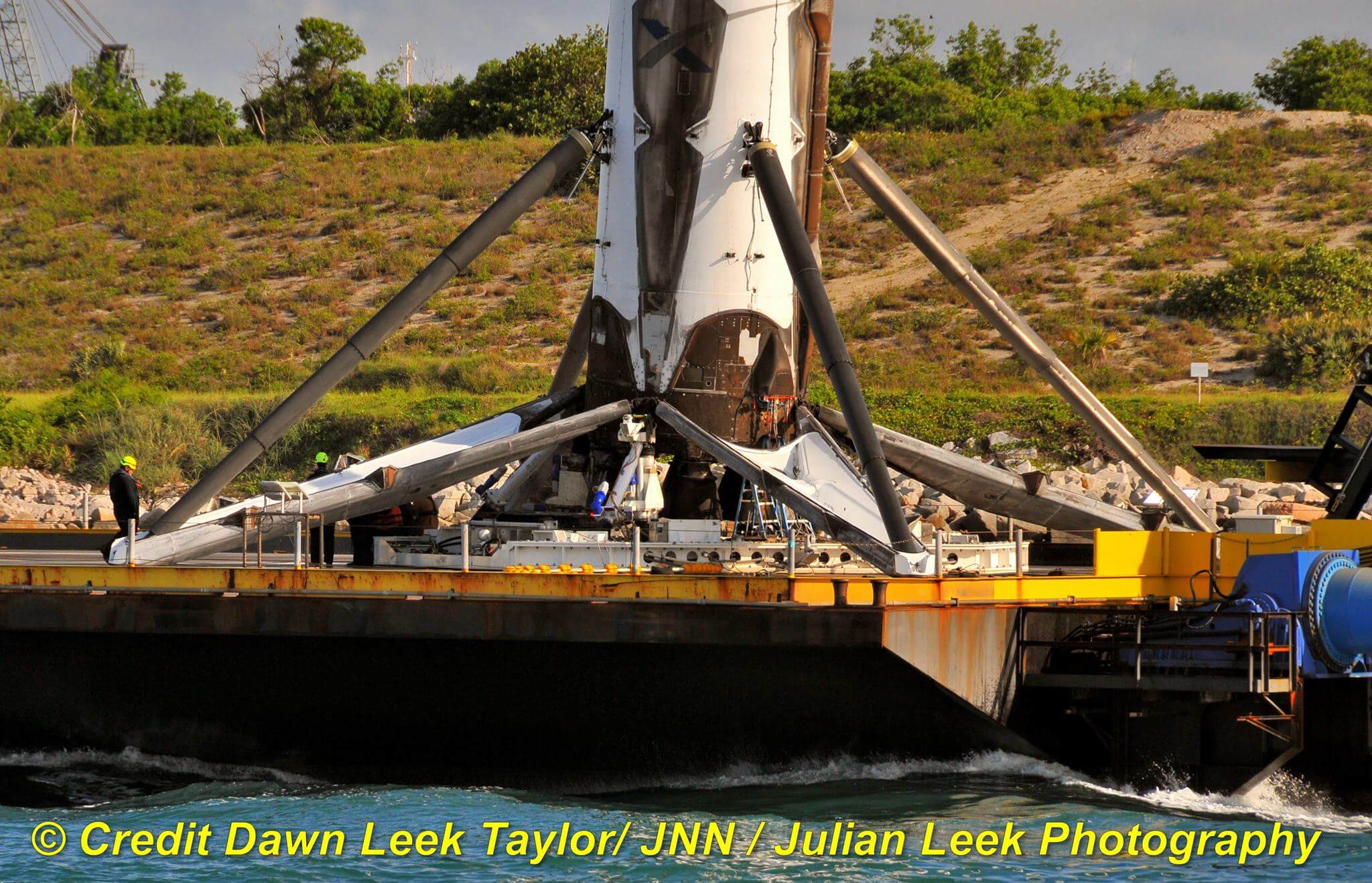
I highly recommend you try and see a droneship arrival if all possible.
The leaning boosters – of which this is only the second – are even more dramatic!
Because the Falcon 9 barely survived the highest ever reentry force and landing heat to date, Musk reported.
The rectangularly shaped OCISLY droneship is tiny – barely the size of a moderately sized apartment complex parking lot.
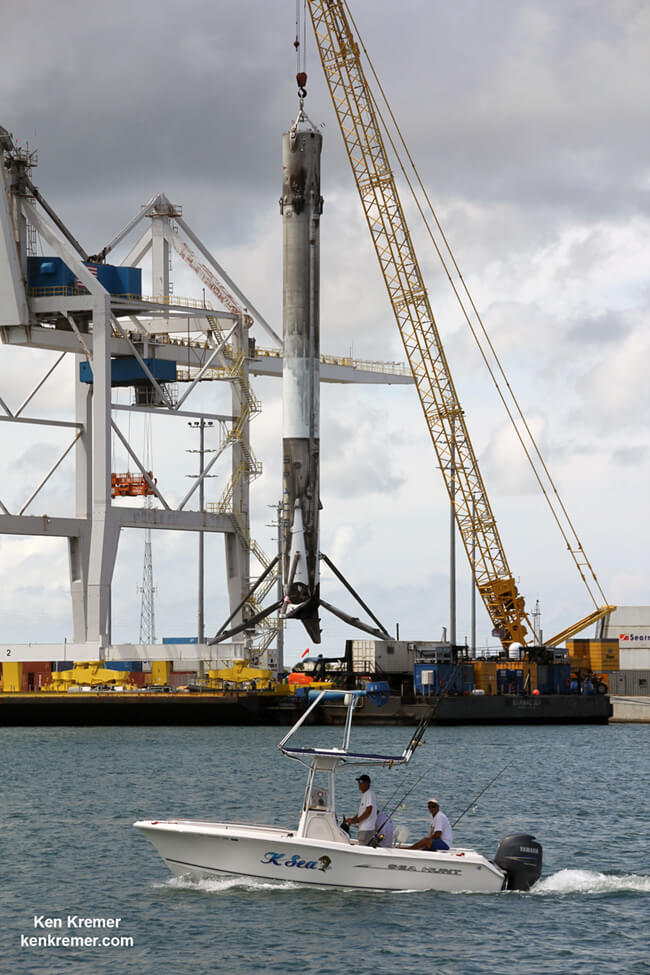
Falcon 9’s first stage for the BulgariaSat-1 mission previously supported the Iridium-1 mission from Vandenberg Air Force Base in January of this year.
Some two minutes and 40 seconds after liftoff the first and second stages separated.
As the second stage continued to orbit, the recycled first stage began the daunting trip back to Earth on a very high energy trajectory that tested the limits of the boosters landing capability.
“Falcon 9 will experience its highest ever reentry force and heat in today’s launch. Good chance rocket booster doesn’t make it back,” SpaceX founder and CEO Elon Musk wrote in a prelaunch tweet.
Following stage separation, Falcon 9’s first stage carried out two burns, the entry burn and the landing burn using a trio of the Merlin 1D engines.
Ultimately the 15 story tall booster successfully landed on the “Of Course I Still Love You” or OCISLY droneship, stationed in the Atlantic Ocean about 400 miles (600 km) offshore and east of Cape Canaveral.
“Rocket is extra toasty and hit the deck hard (used almost all of the emergency crush core), but otherwise good,” Musk tweeted shortly after the recycled booster successfully launched and landed for its second time.
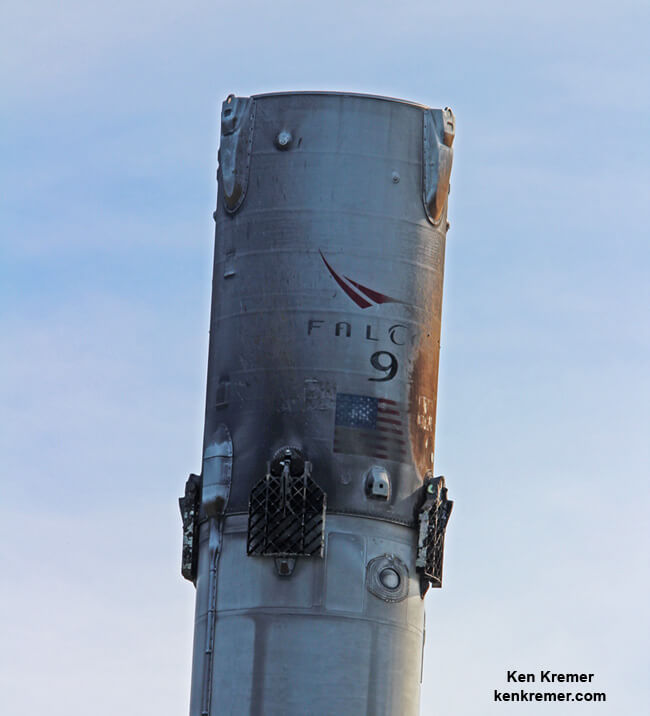
BulgariaSat-1 and Iridium-2 counted as the eighth and ninth SpaceX launches of 2017.
Including those two ocean platform landings, SpaceX has now successfully recovered 13 boosters; 5 by land and 8 by sea, over the past 18 months.
Both landing droneships are now back into their respective coastal ports.
It’s a feat straight out of science fiction but aimed at drastically slashing the cost of access to space as envisioned by Musk.
Watch my BulgariaSat-1 launch video from KSC pad 39A
Video Caption: Launch of SpaceX Falcon 9 on June 23, 2017 from pad 39A at the Kennedy Space Center carrying BulgariaSat-1 TV broadband satellite to geosynchronous orbit for BulgariaSat, which is Bulgaria’s 1st GeoComSat – as seen in this remote video taken at the pad. Credit: Ken Kremer/kenkremer.com
Watch for Ken’s onsite BulgariaSat-1 mission reports direct from the Kennedy Space Center and Cape Canaveral Air Force Station, Florida.
Stay tuned here for Ken’s continuing Earth and Planetary science and human spaceflight news.
